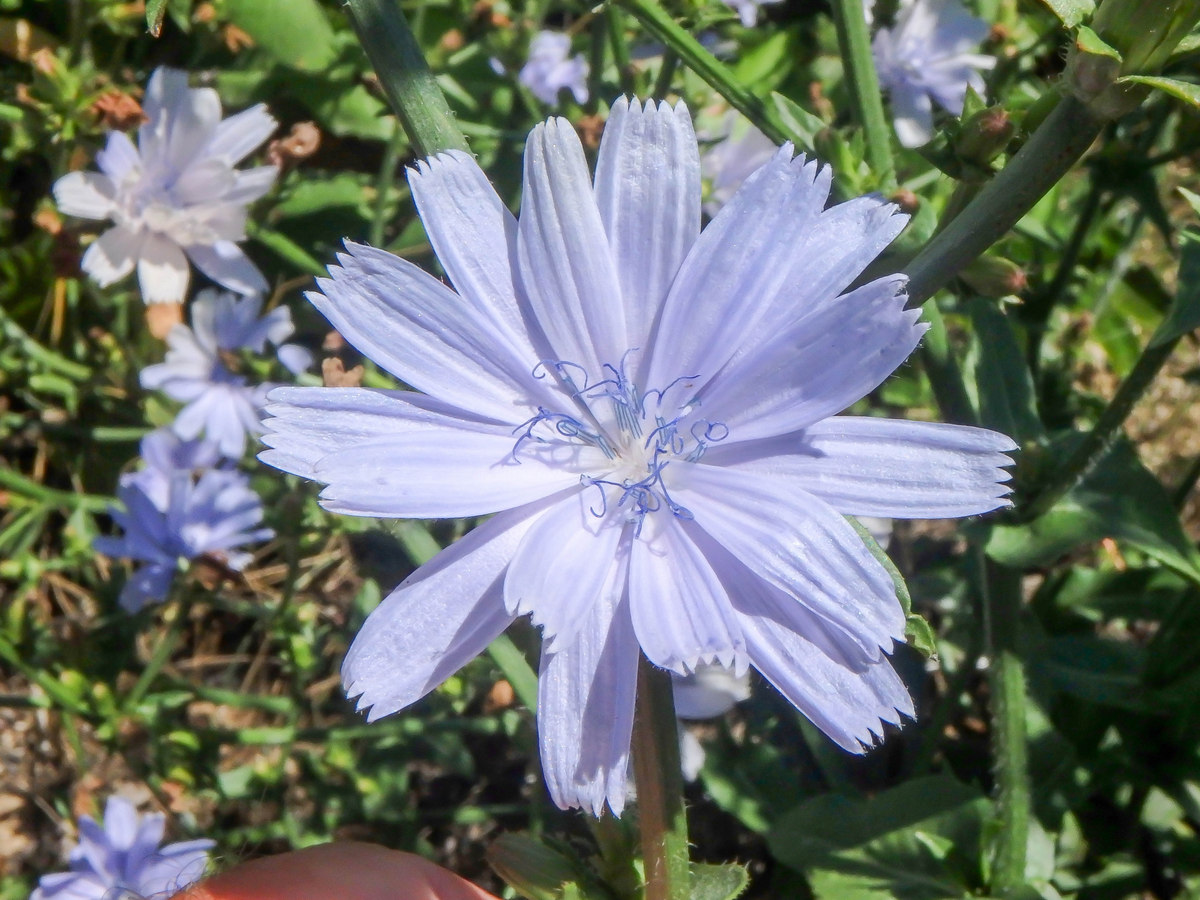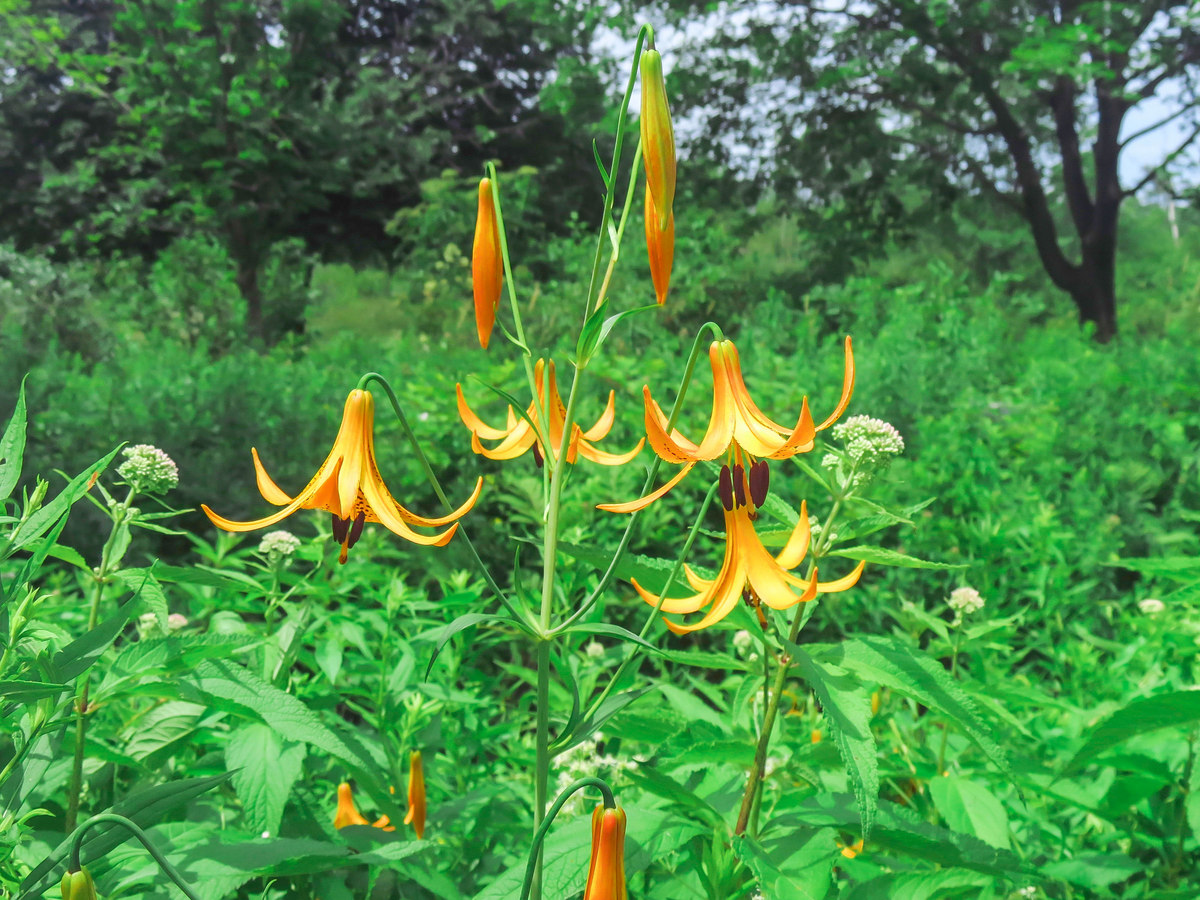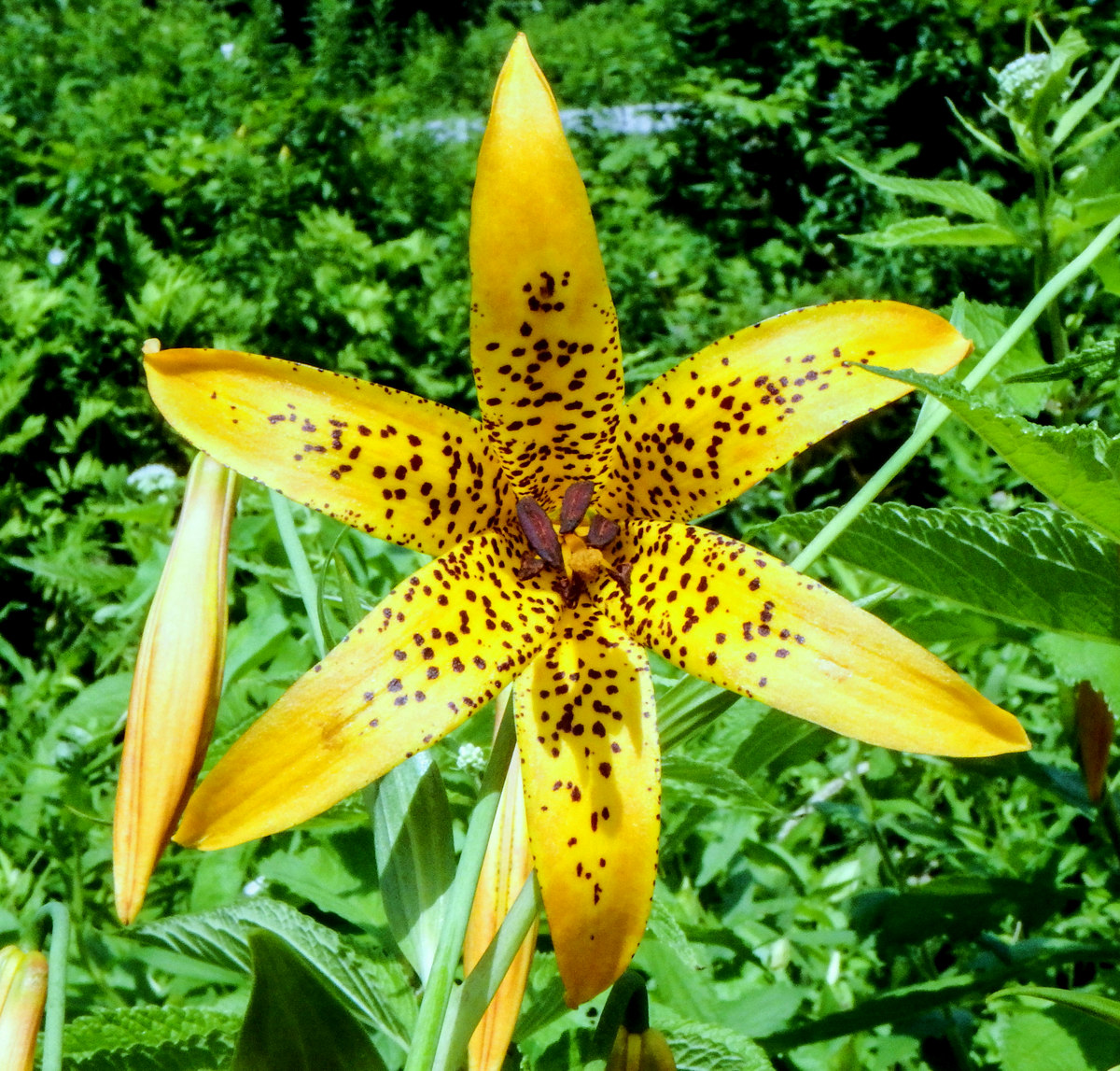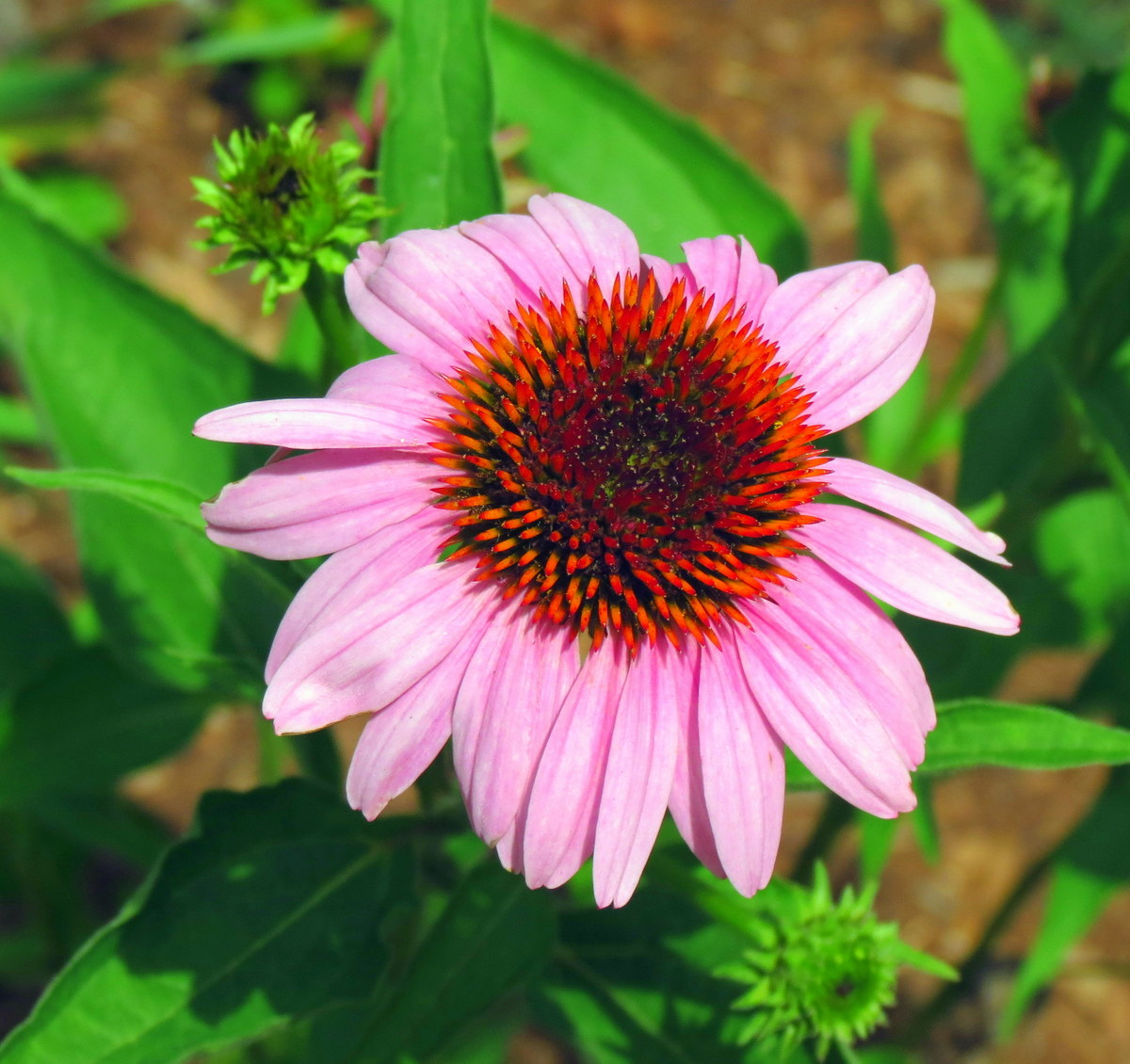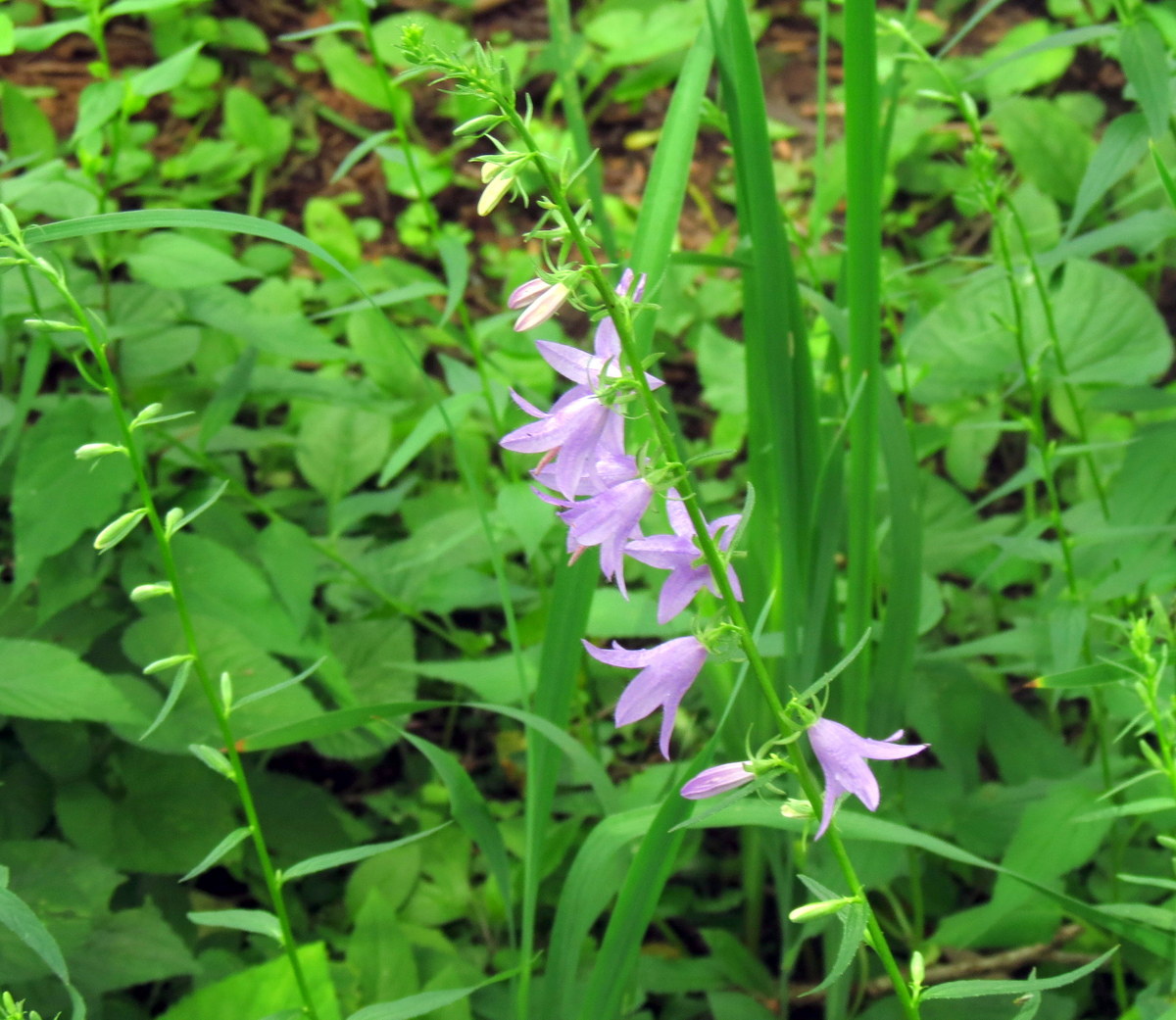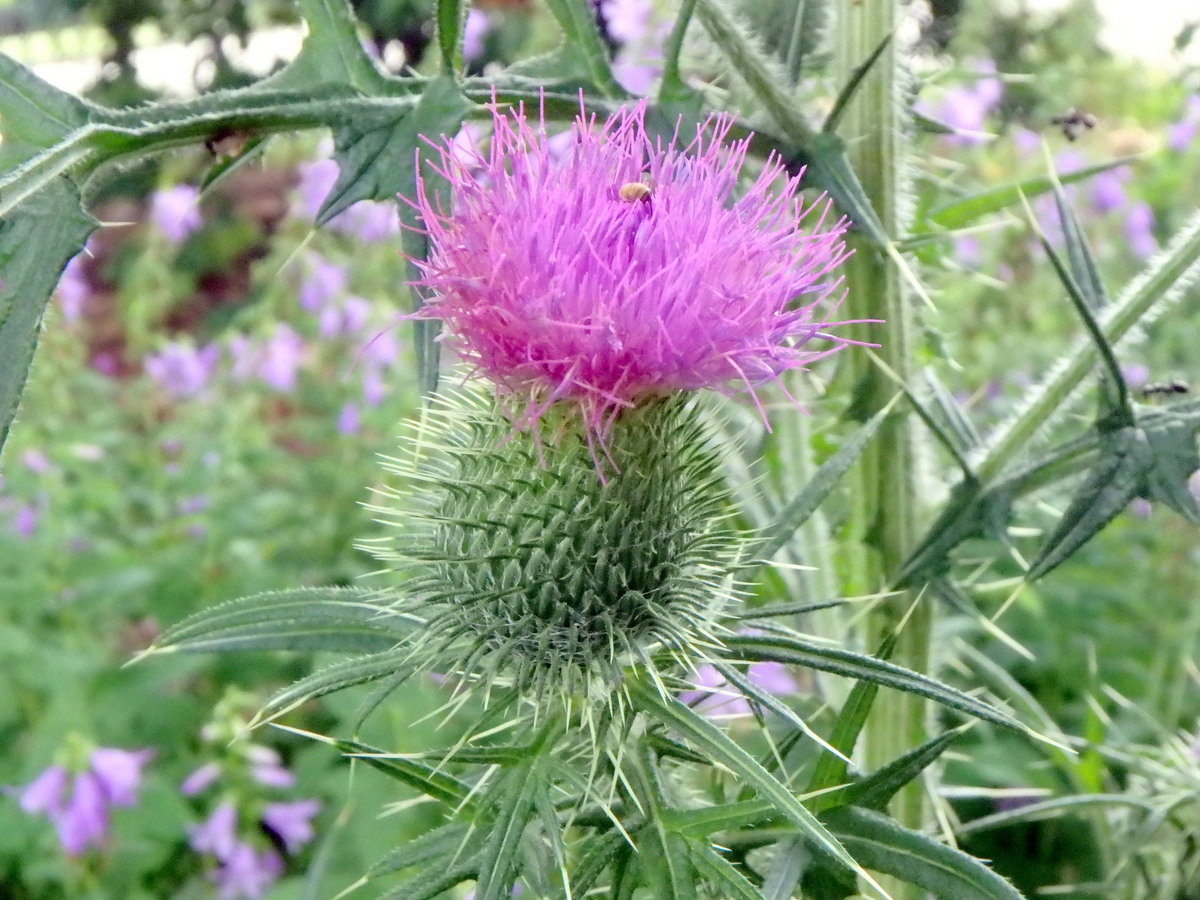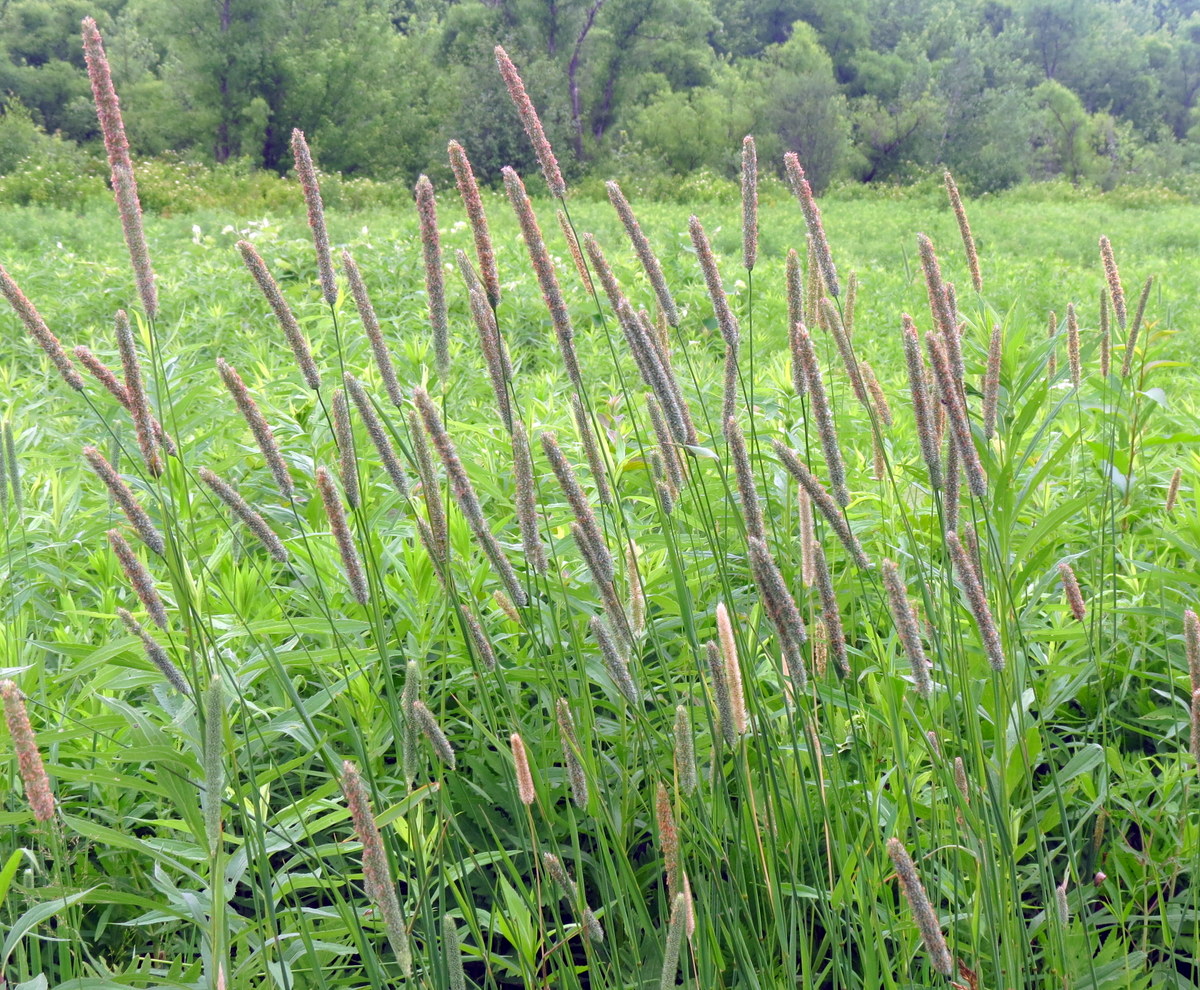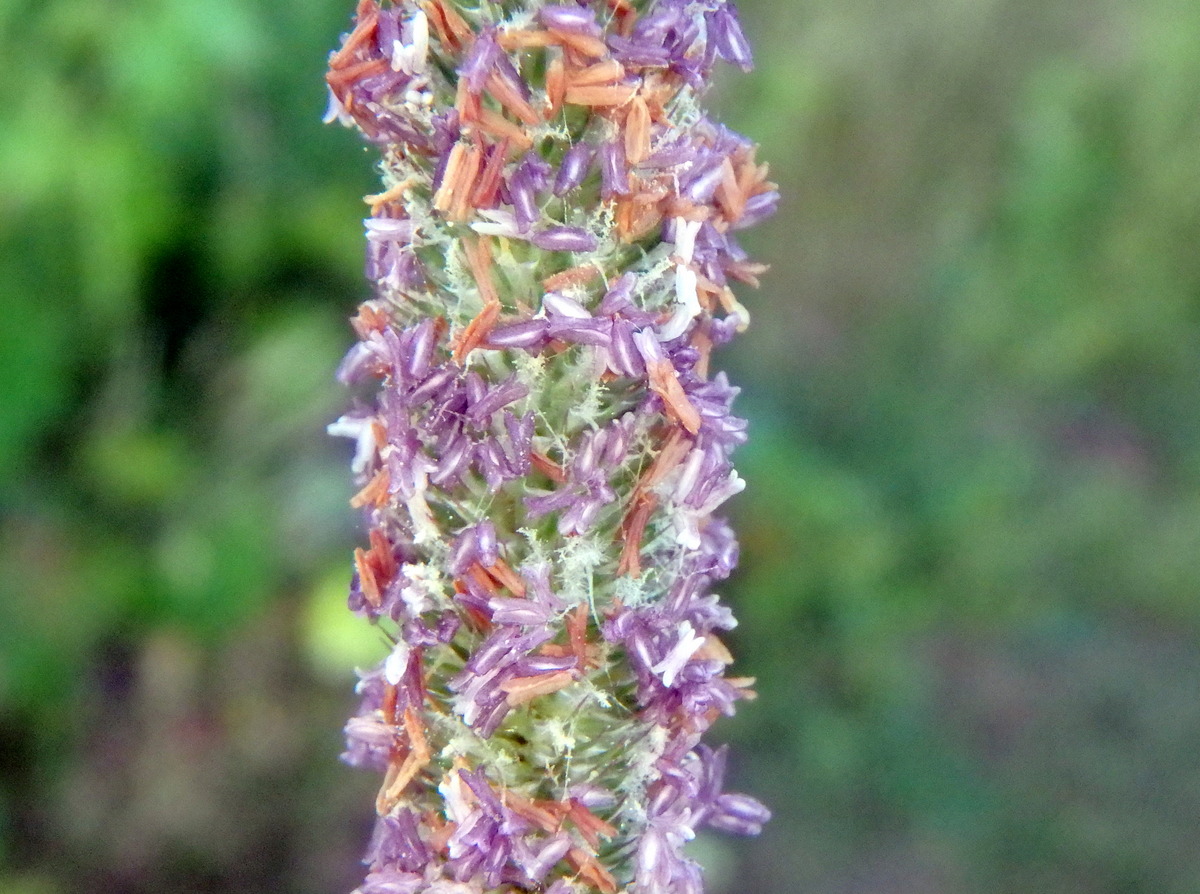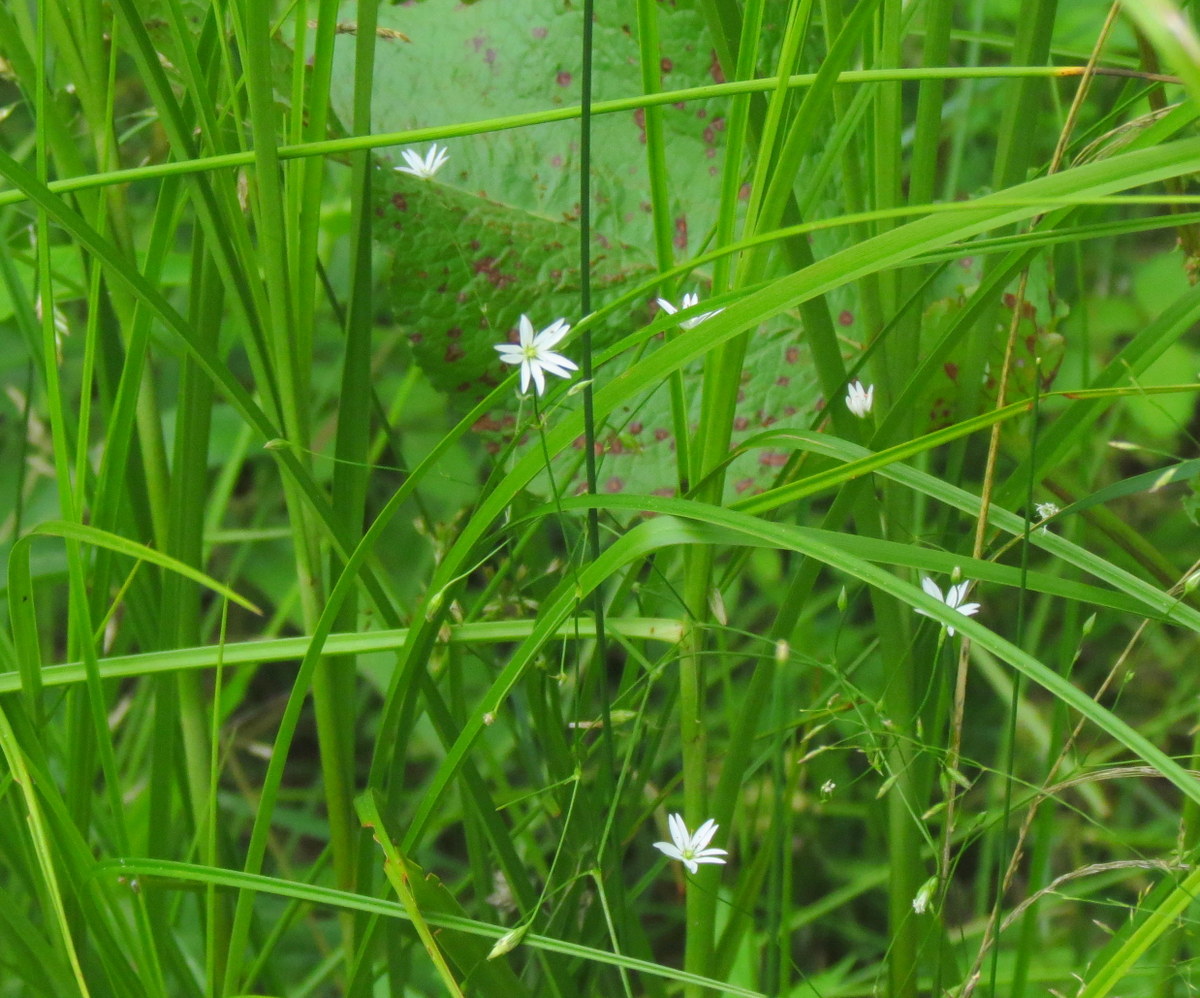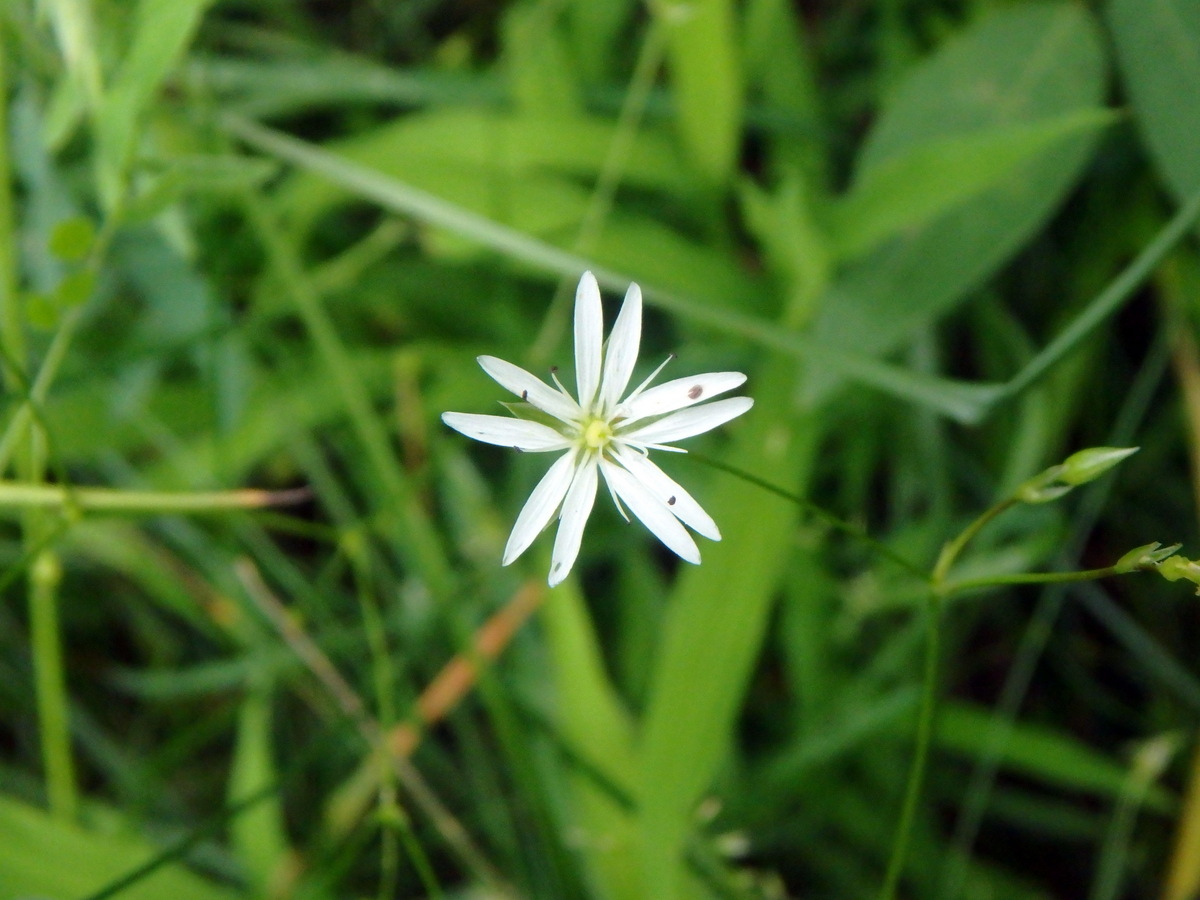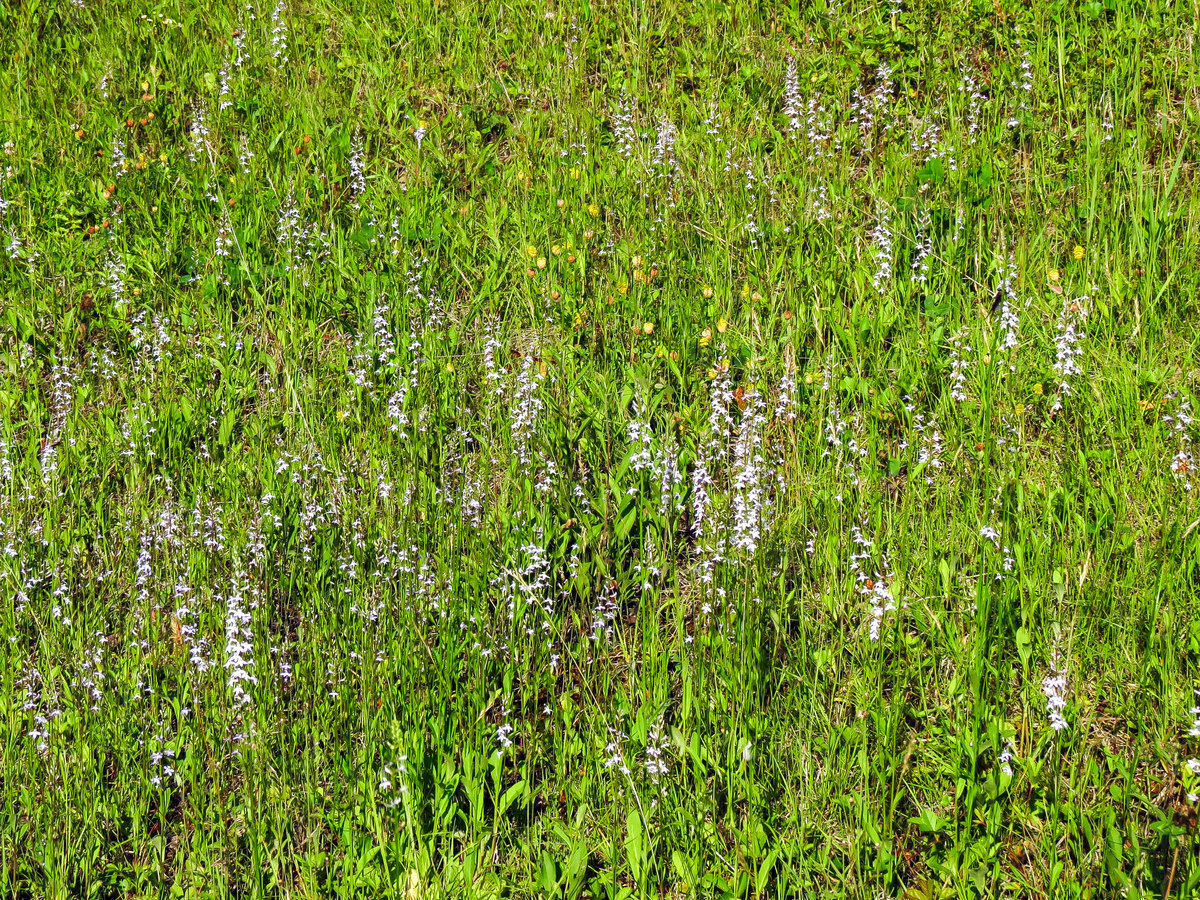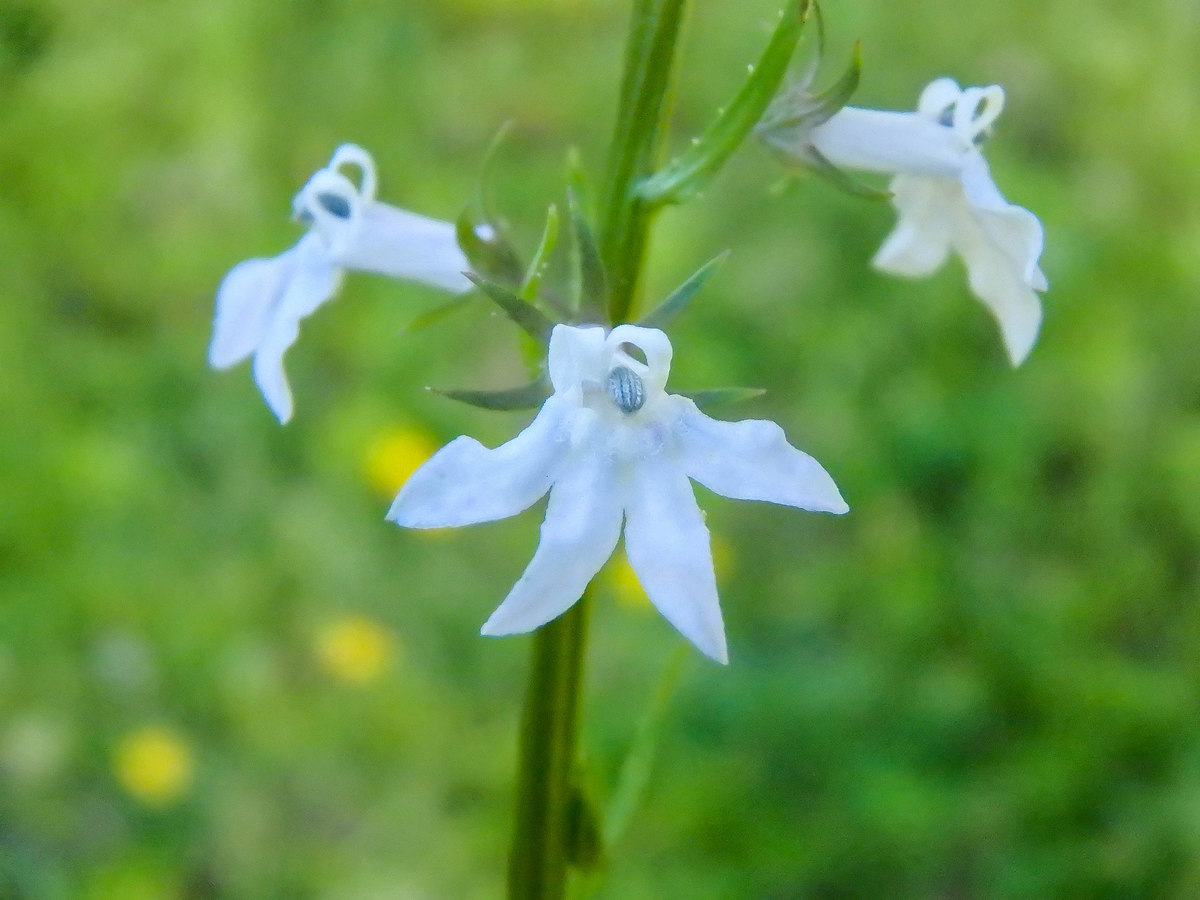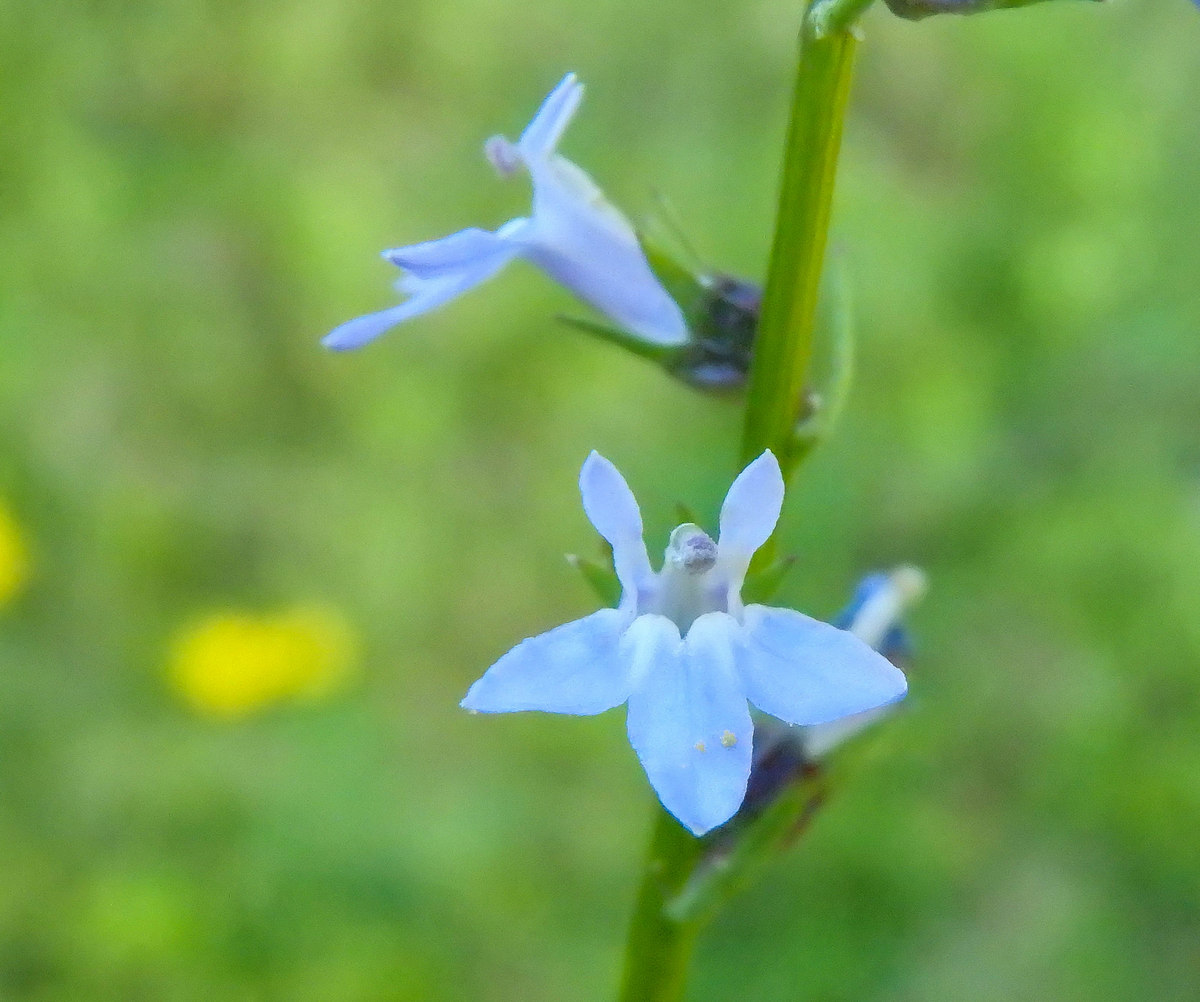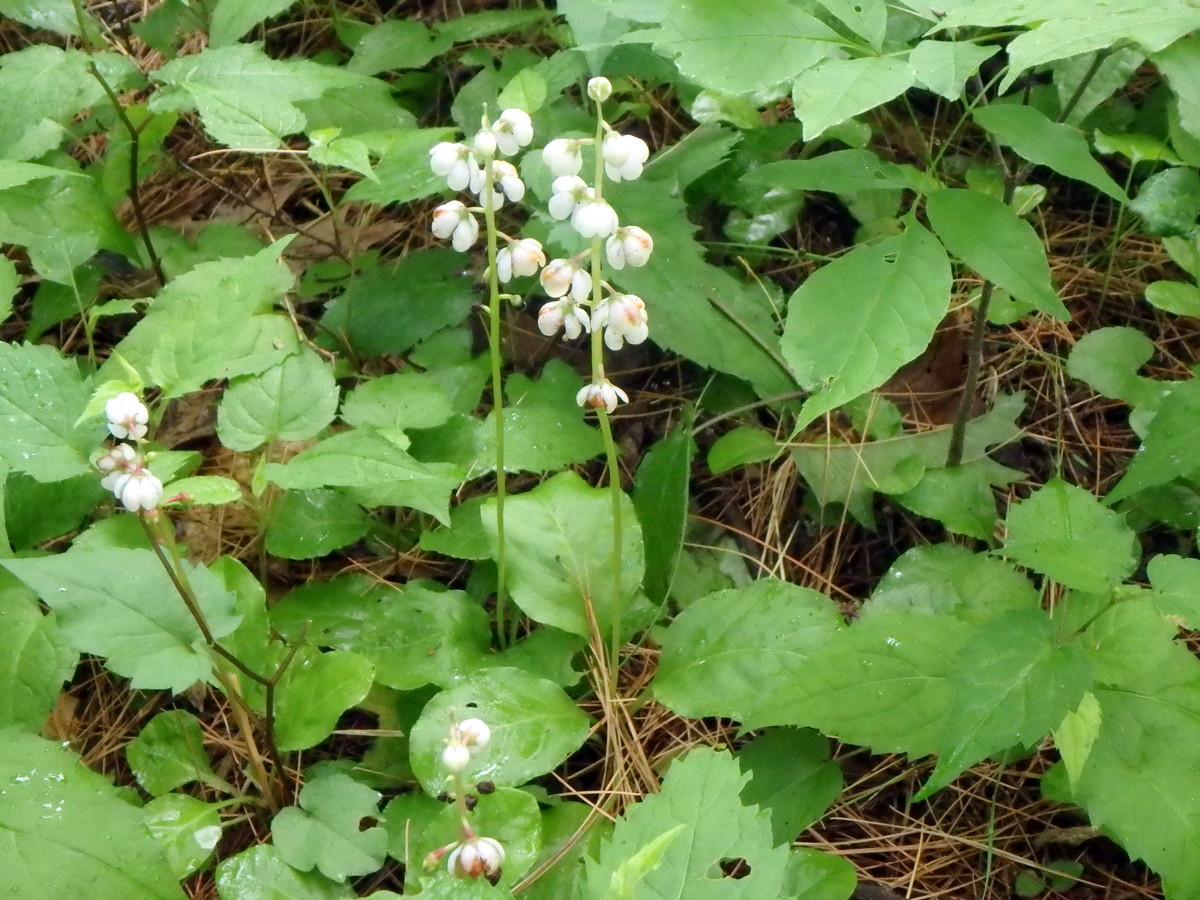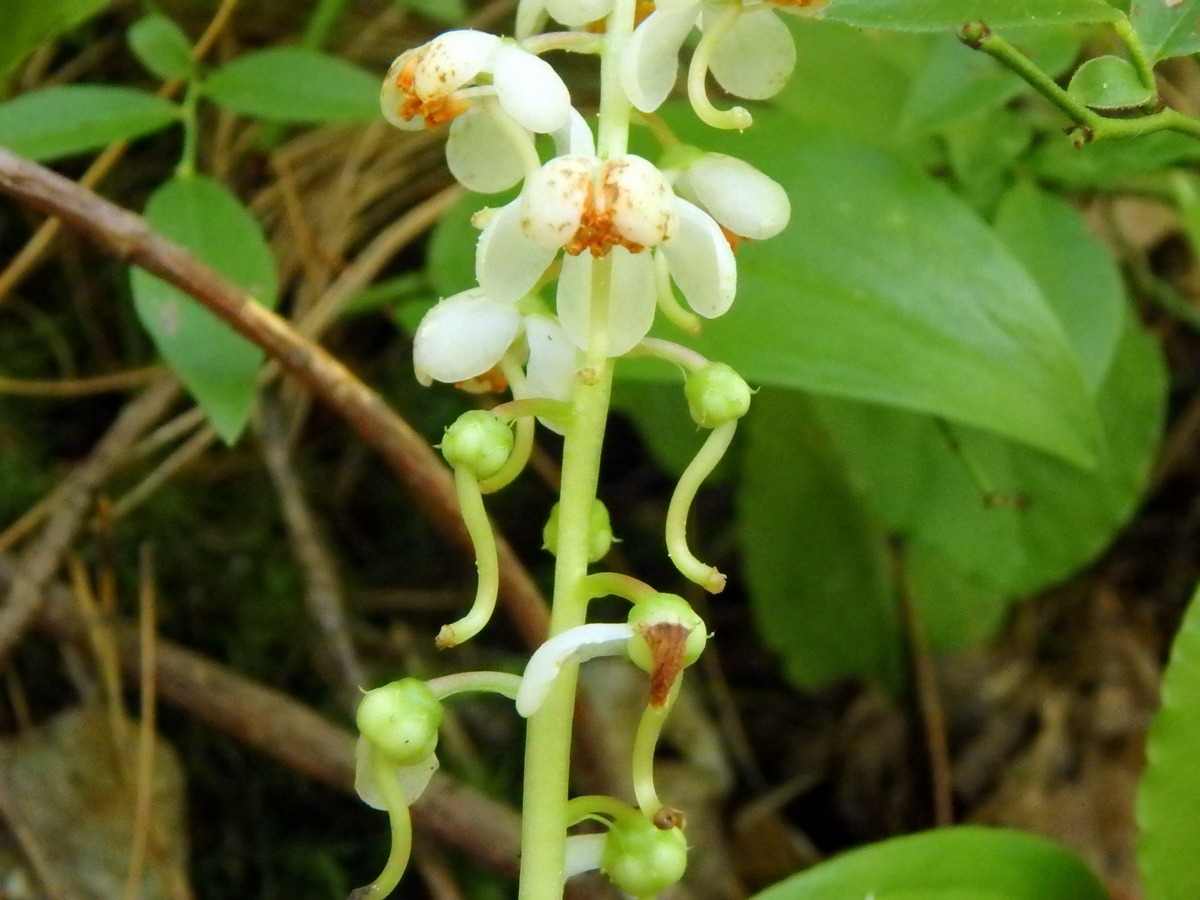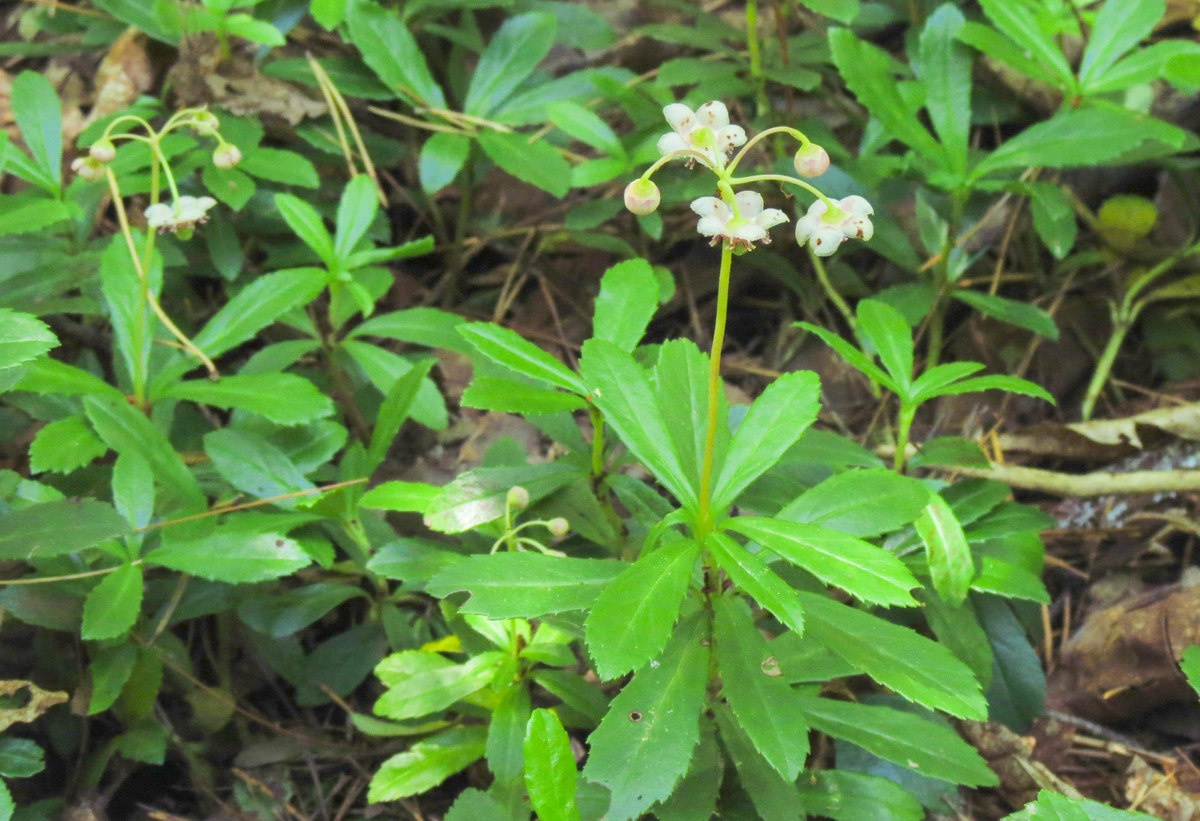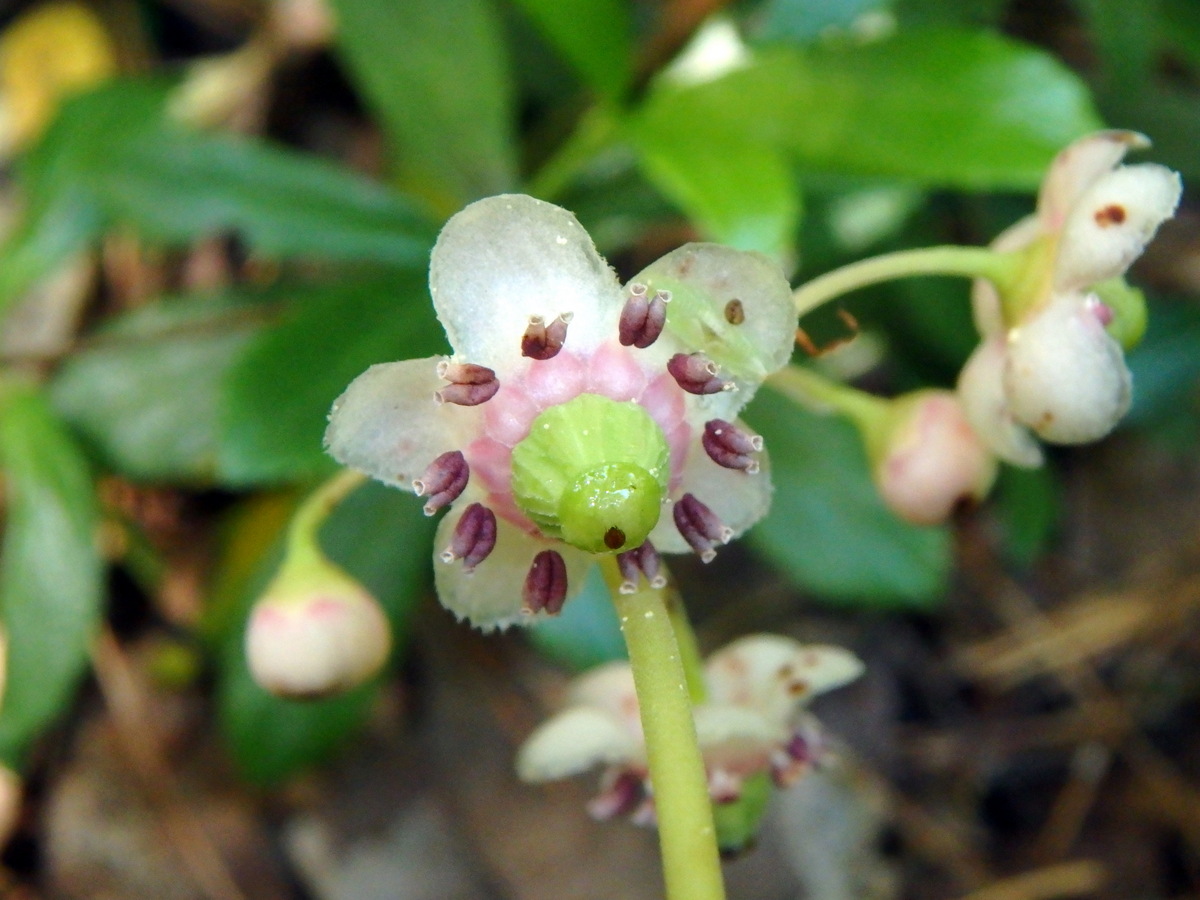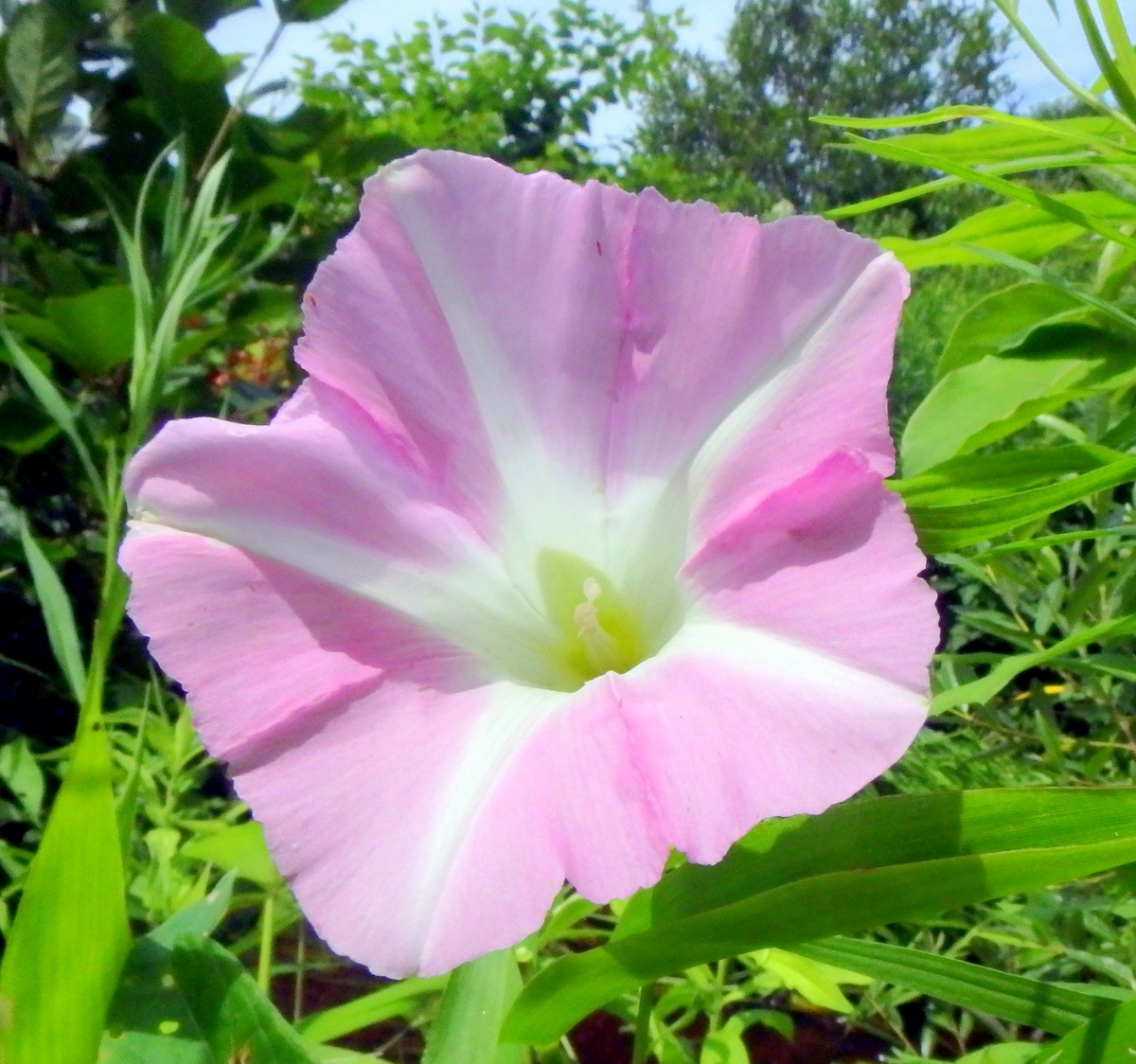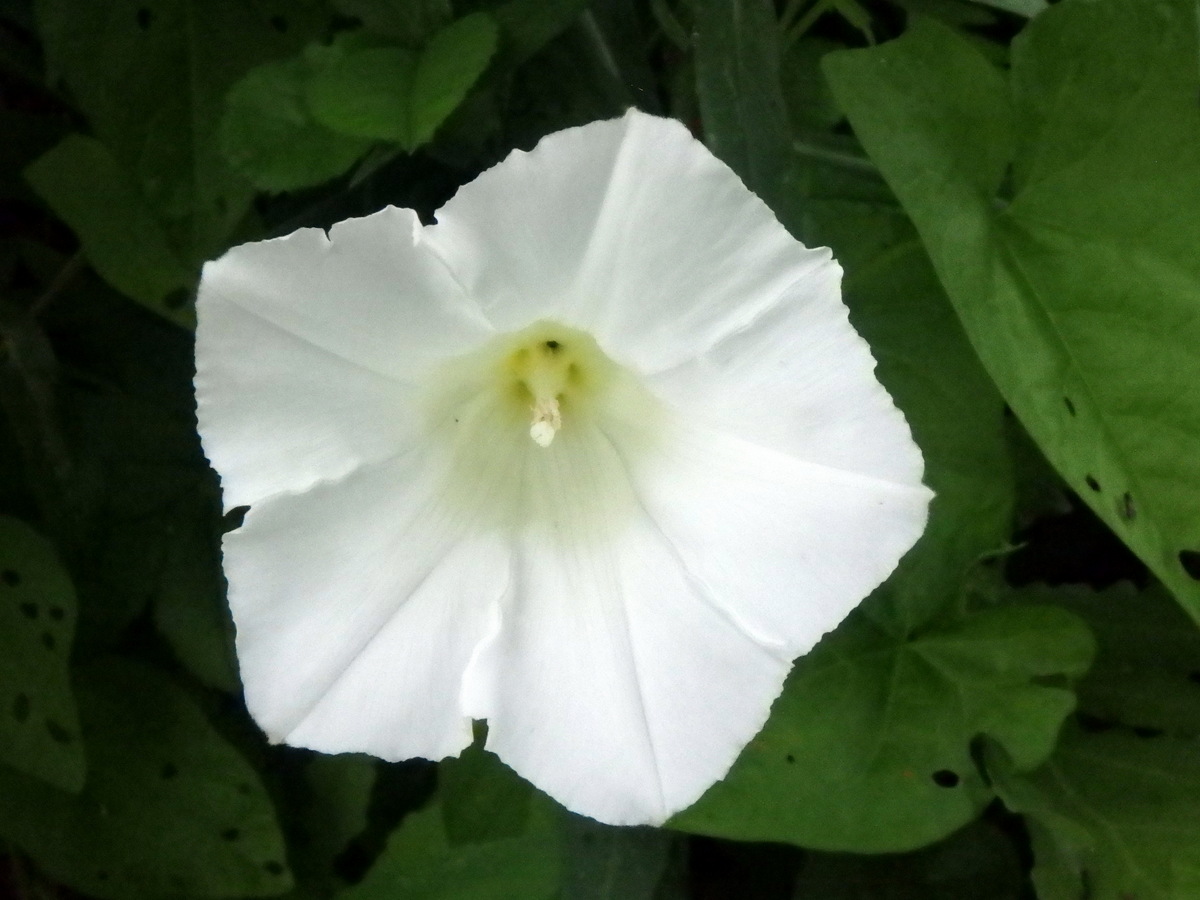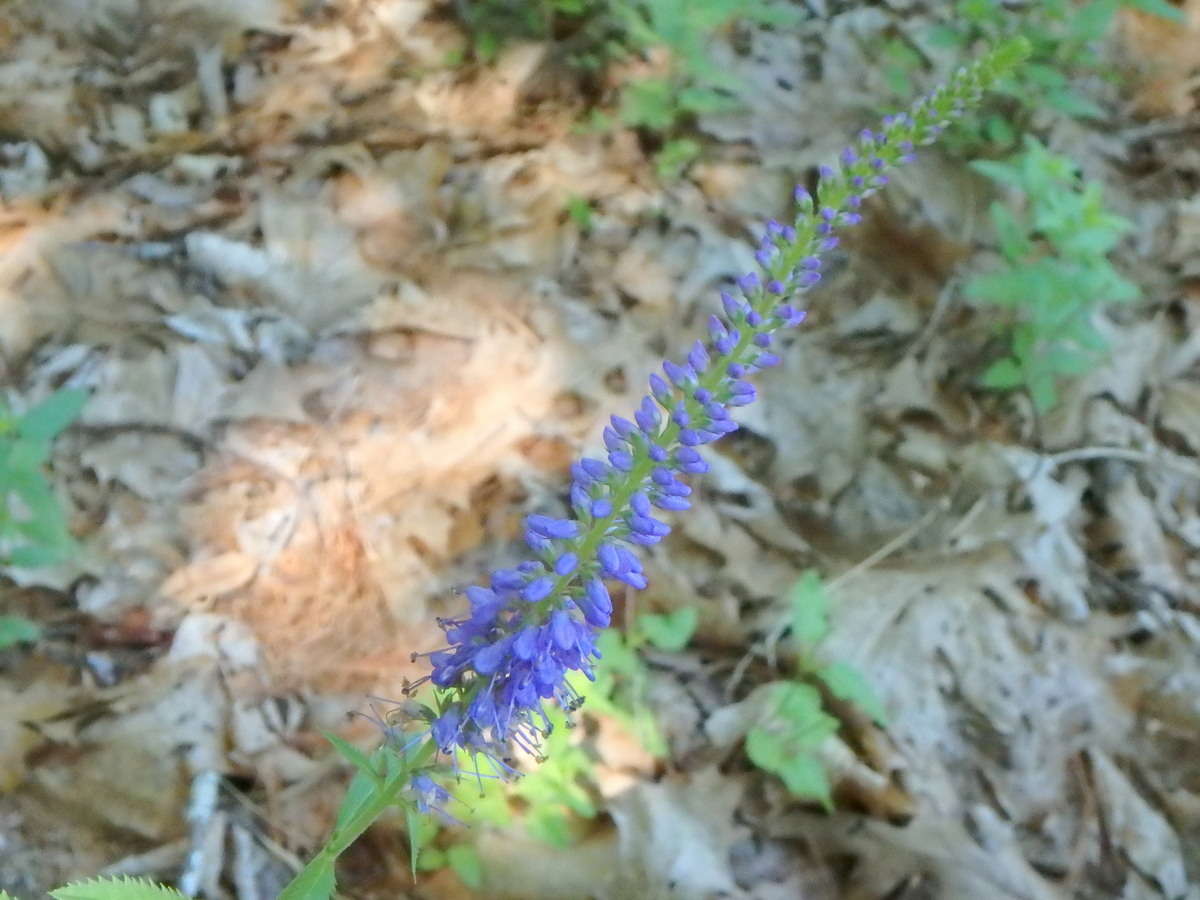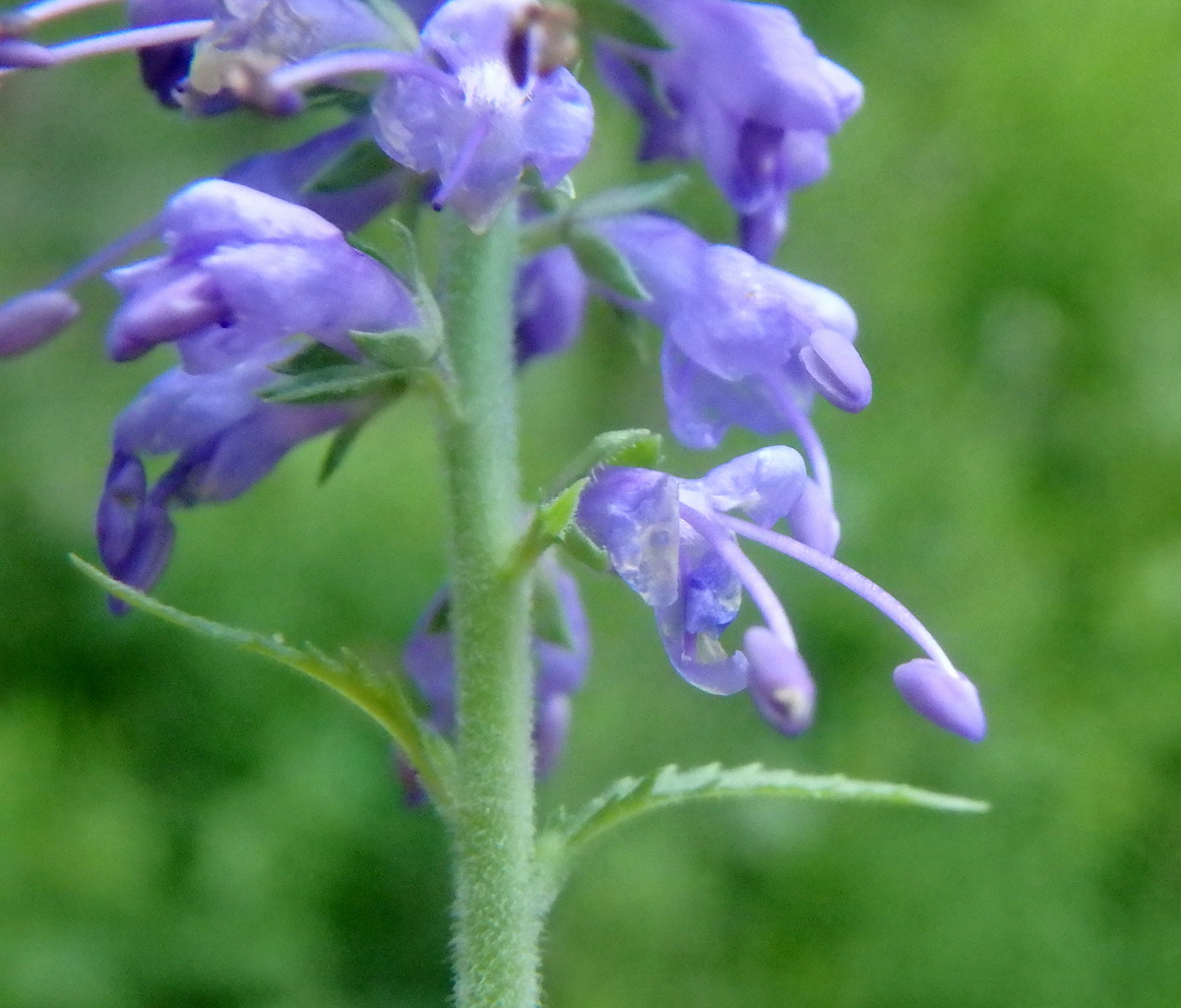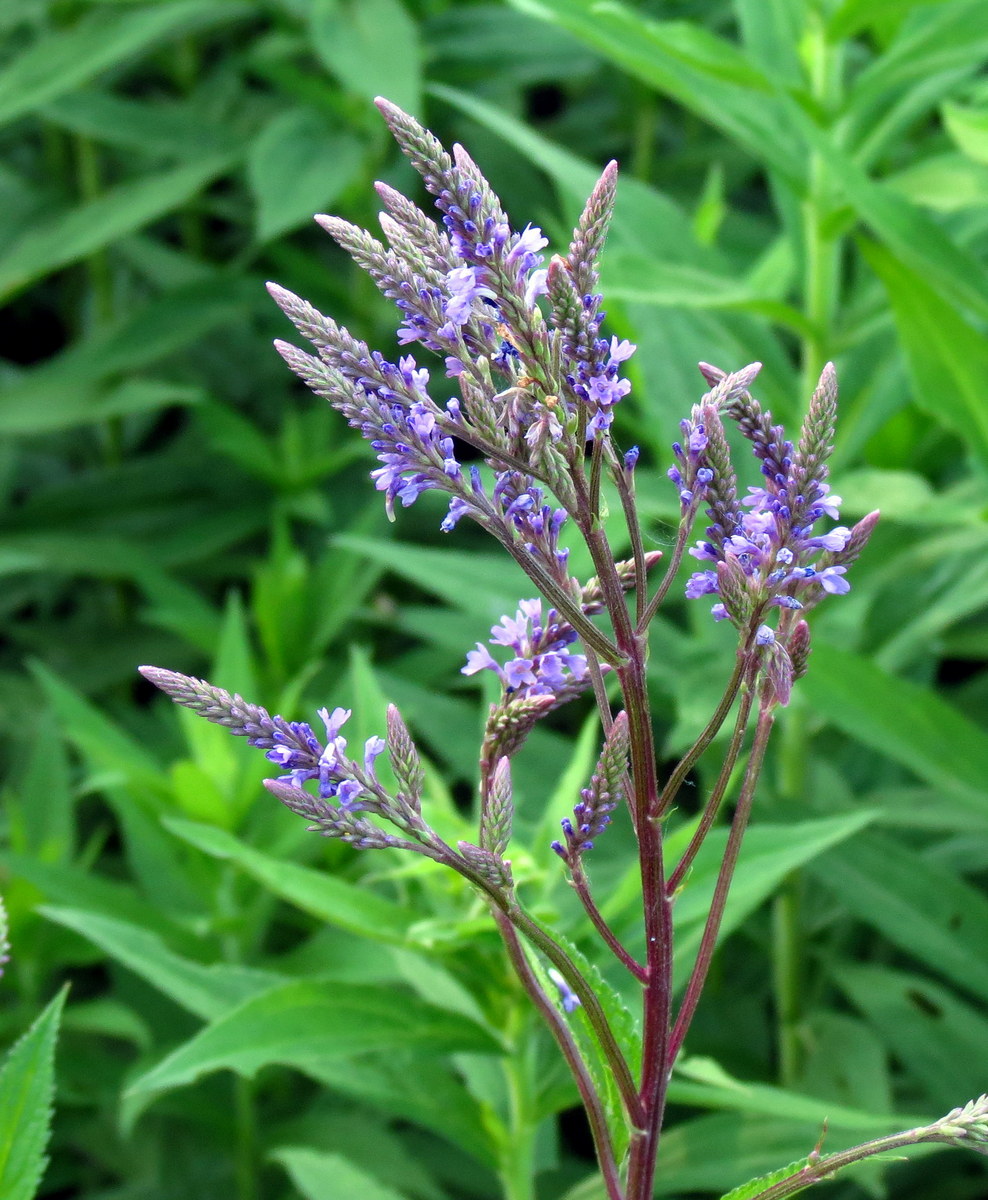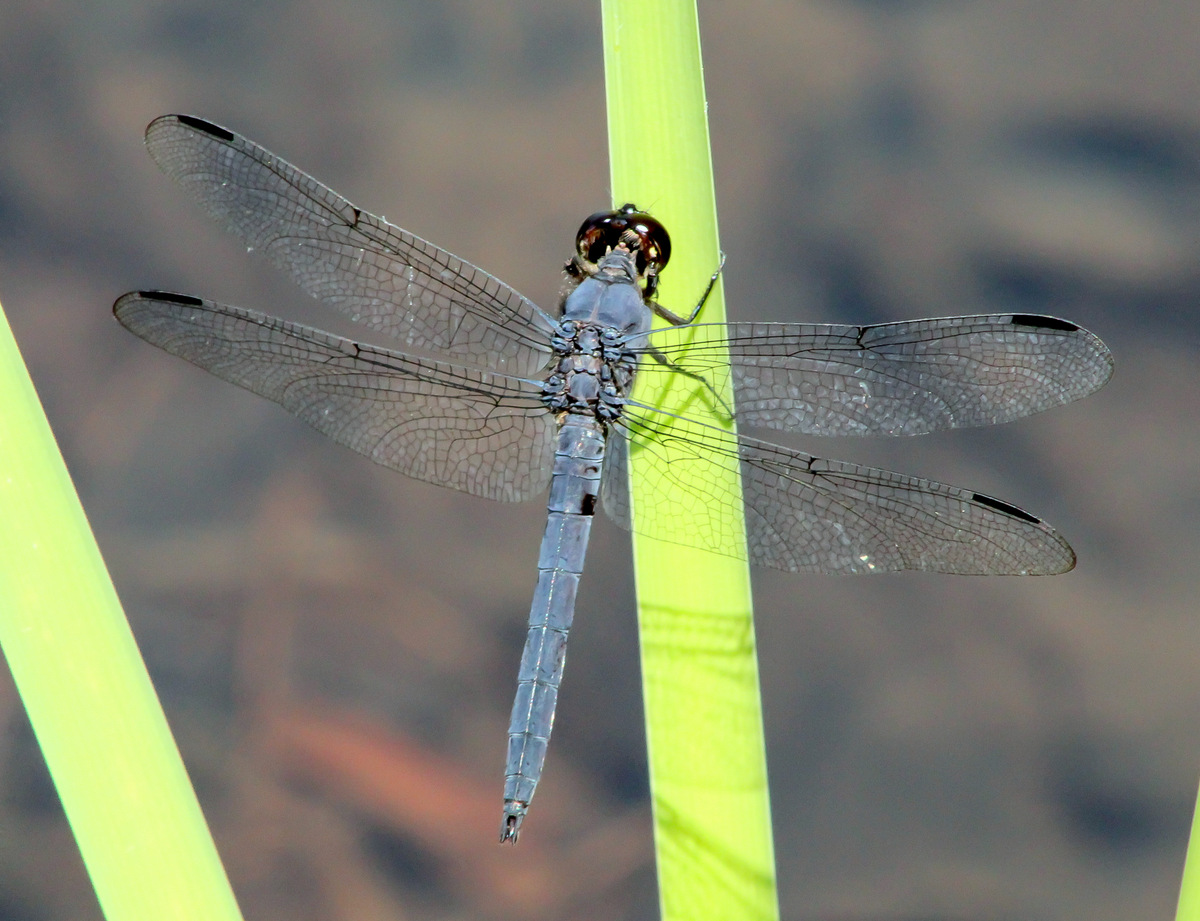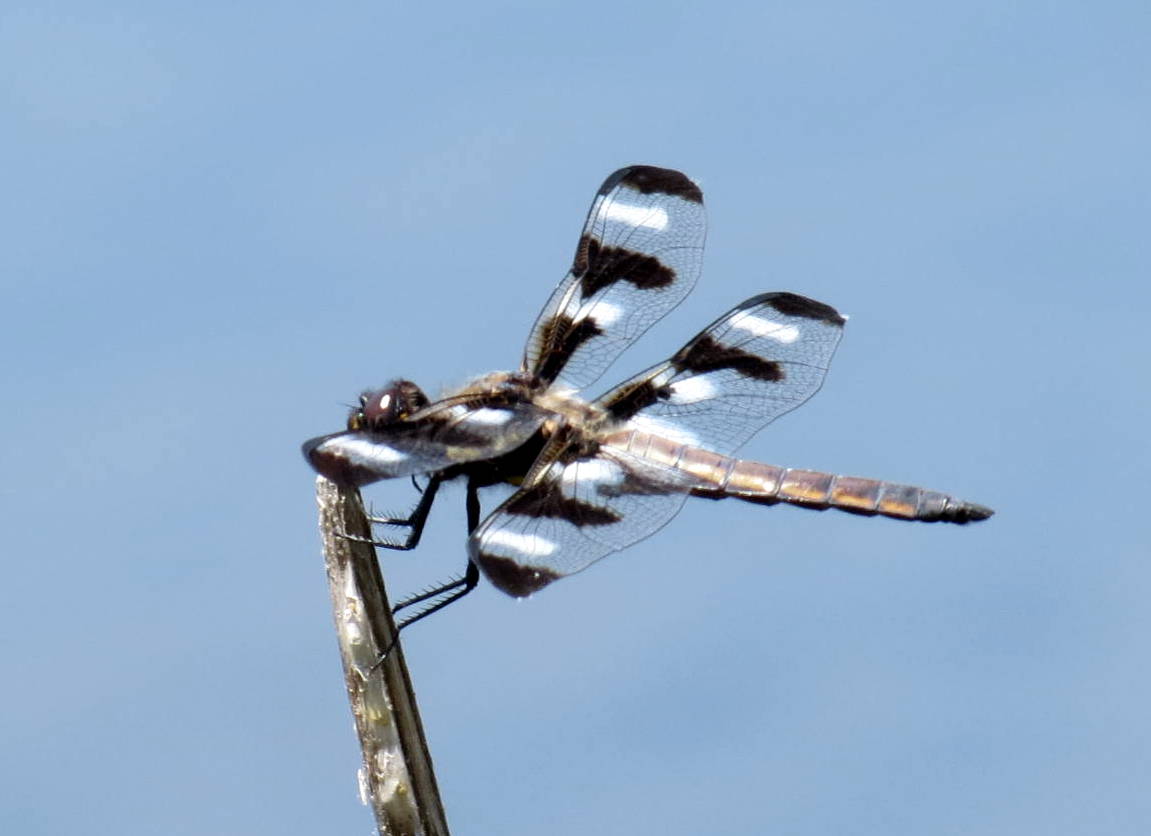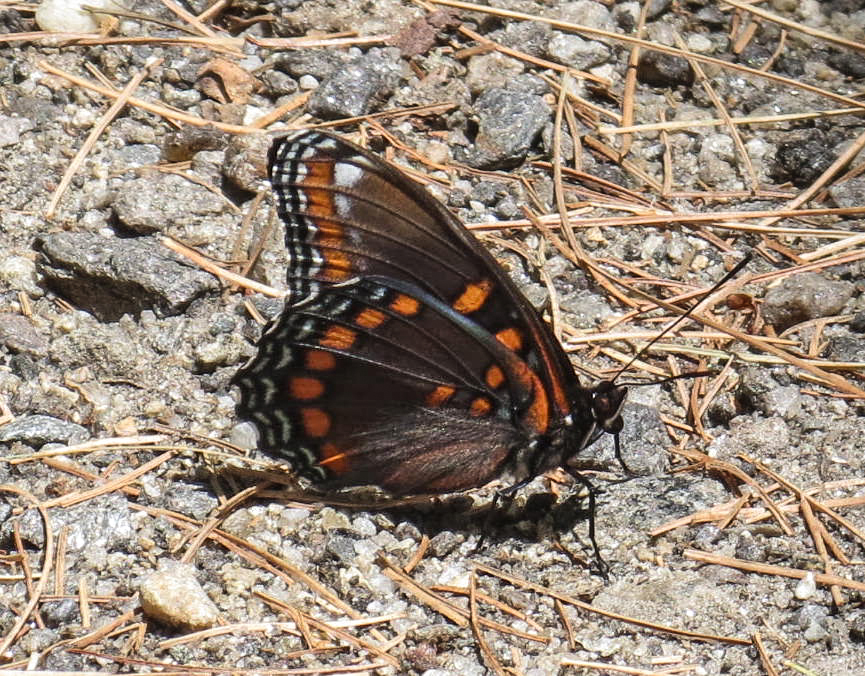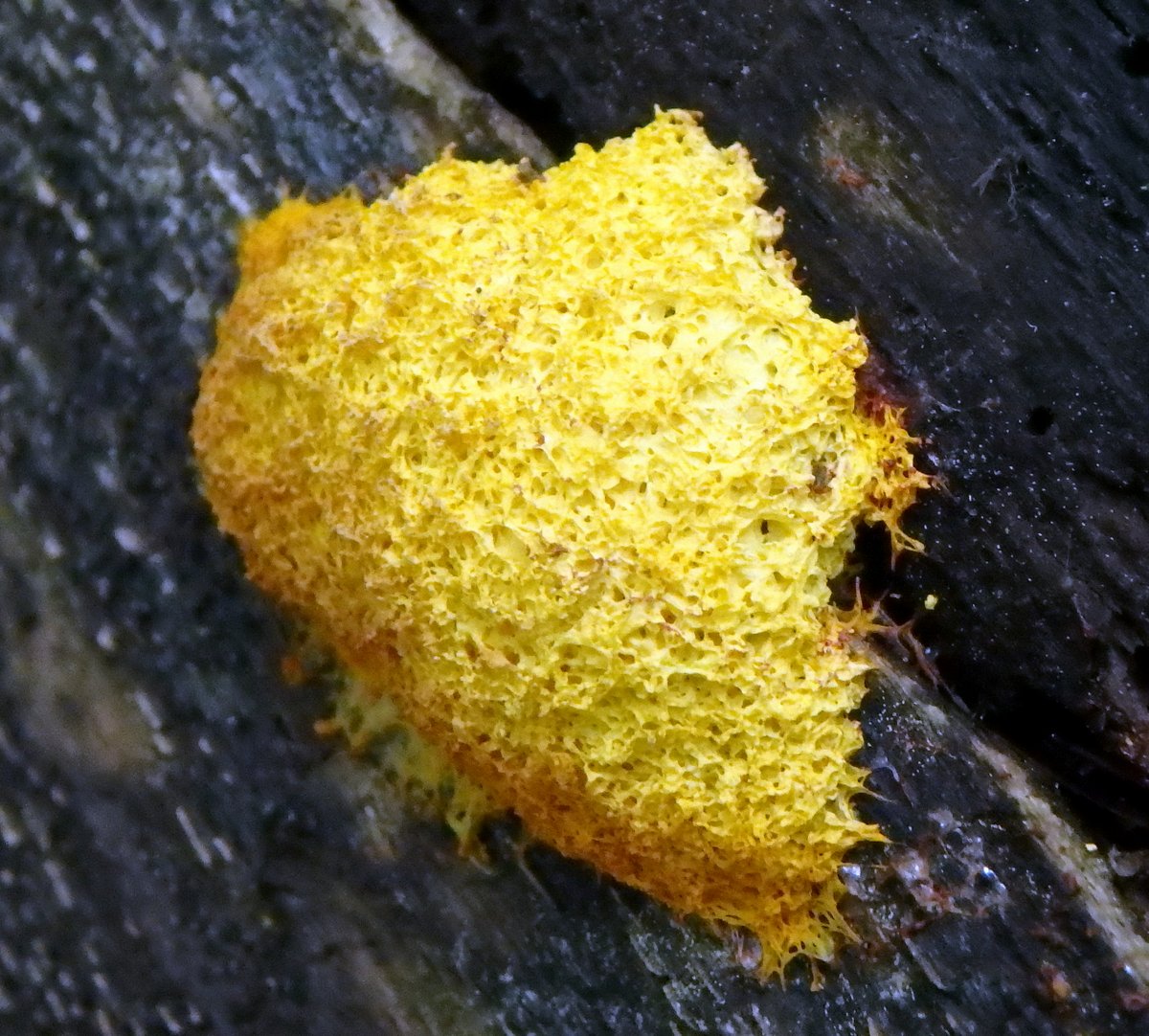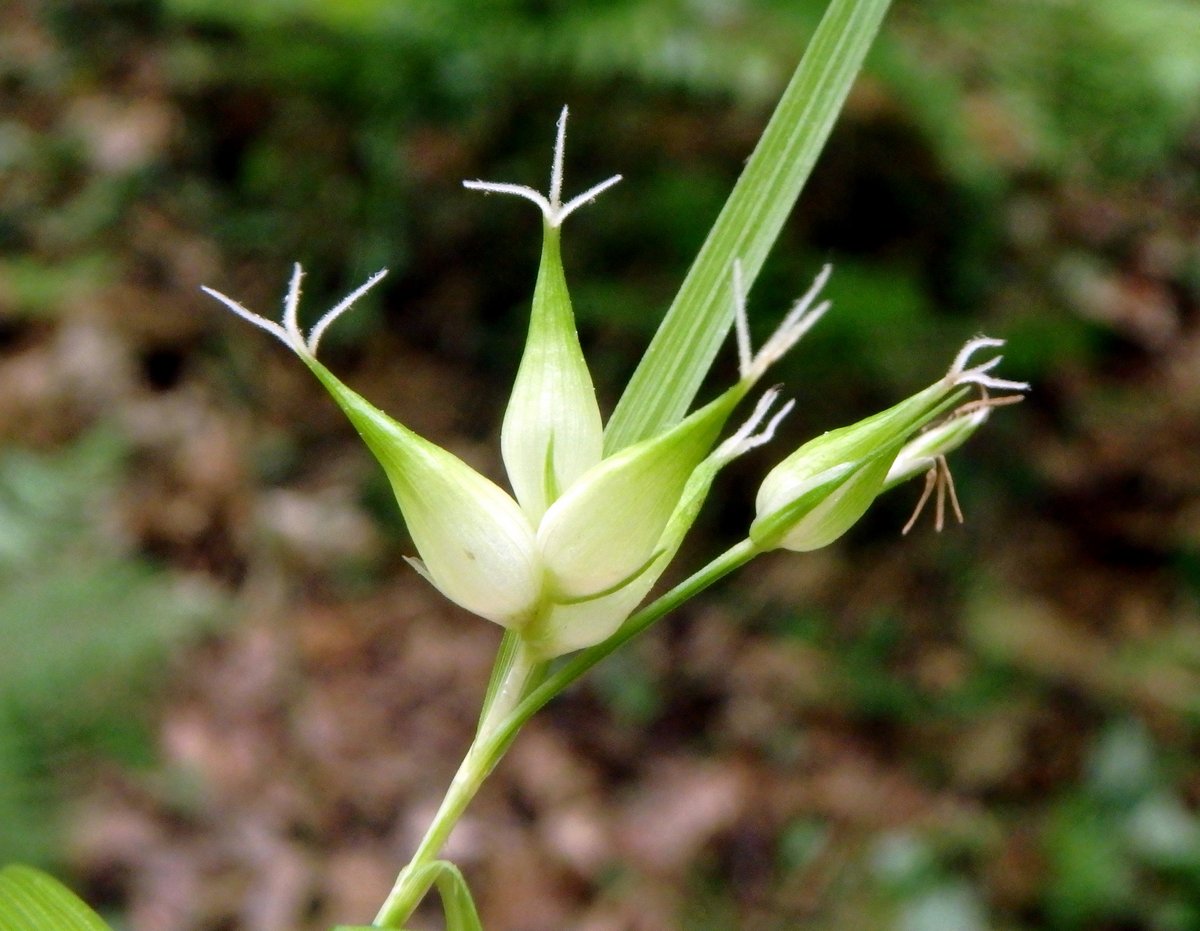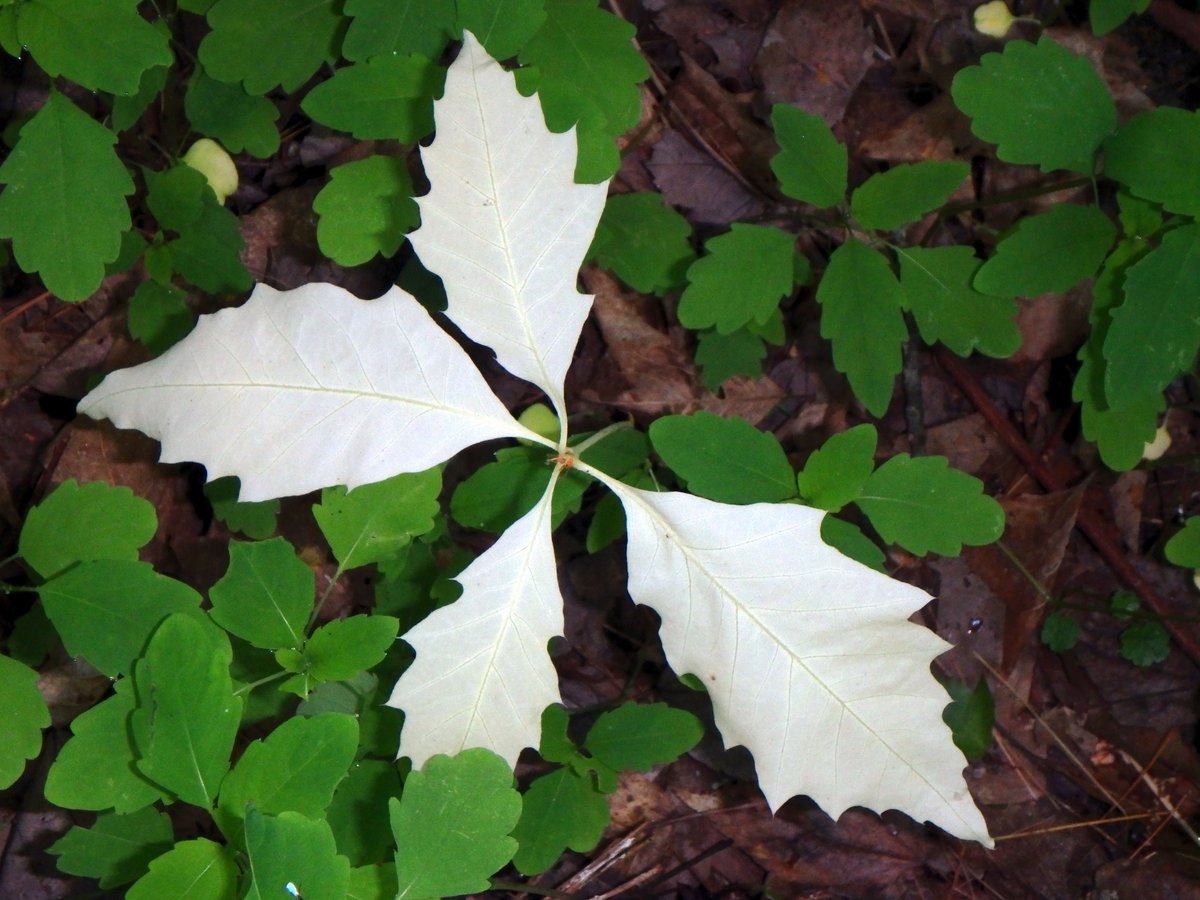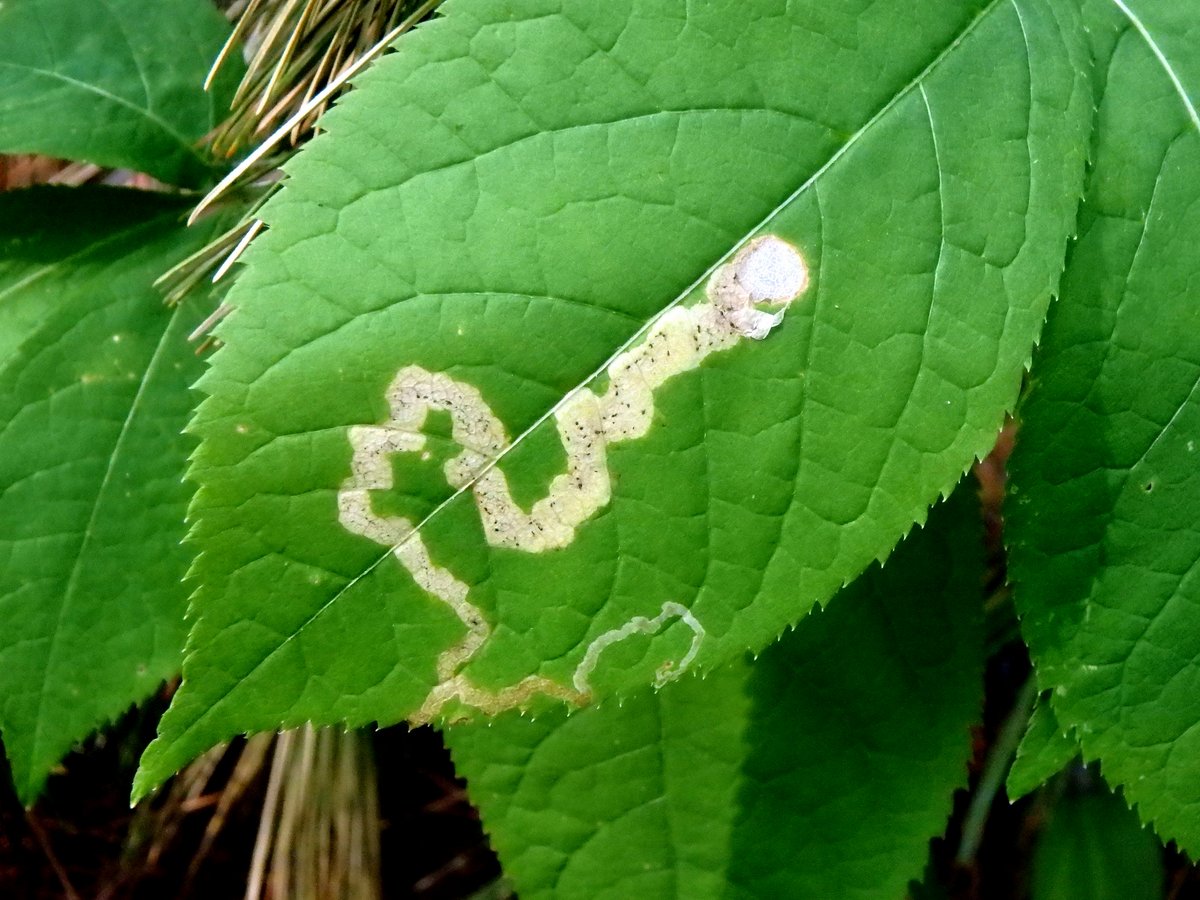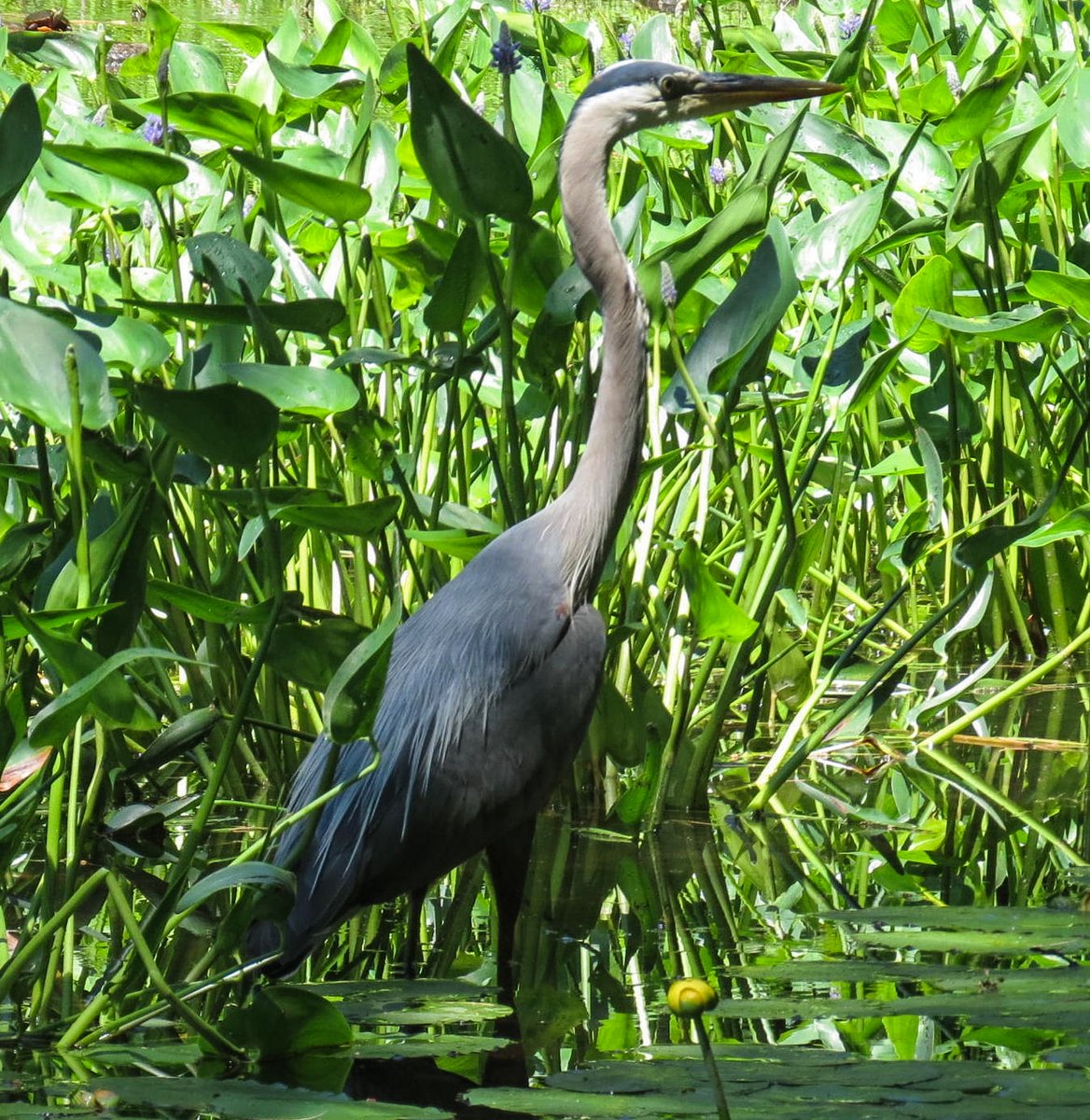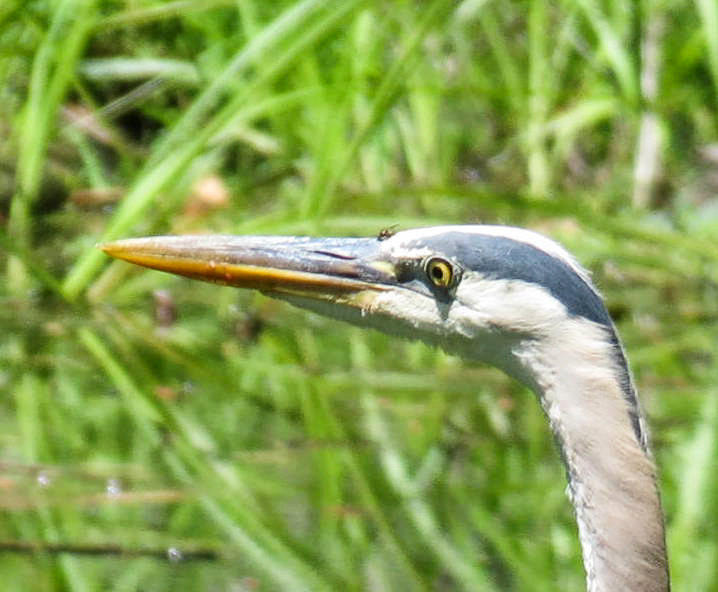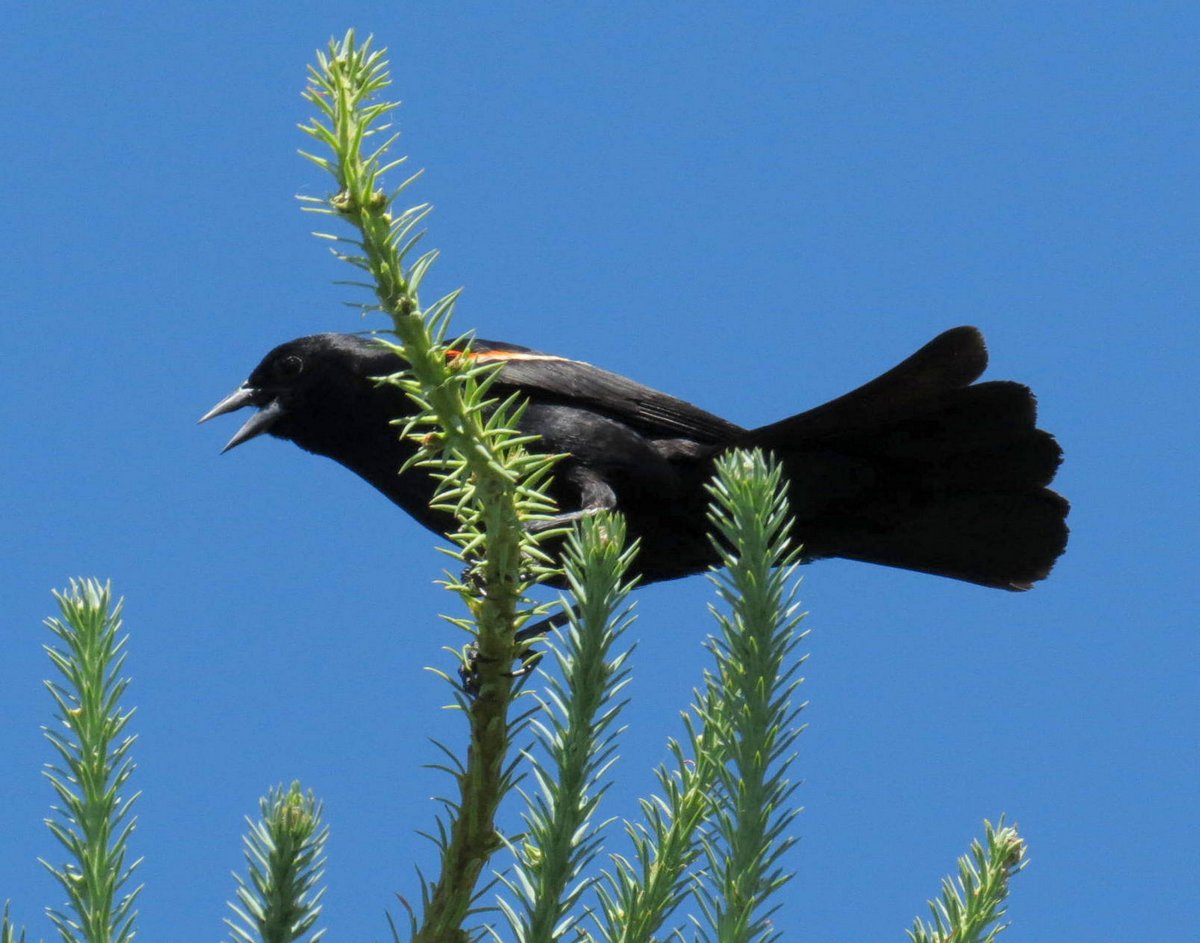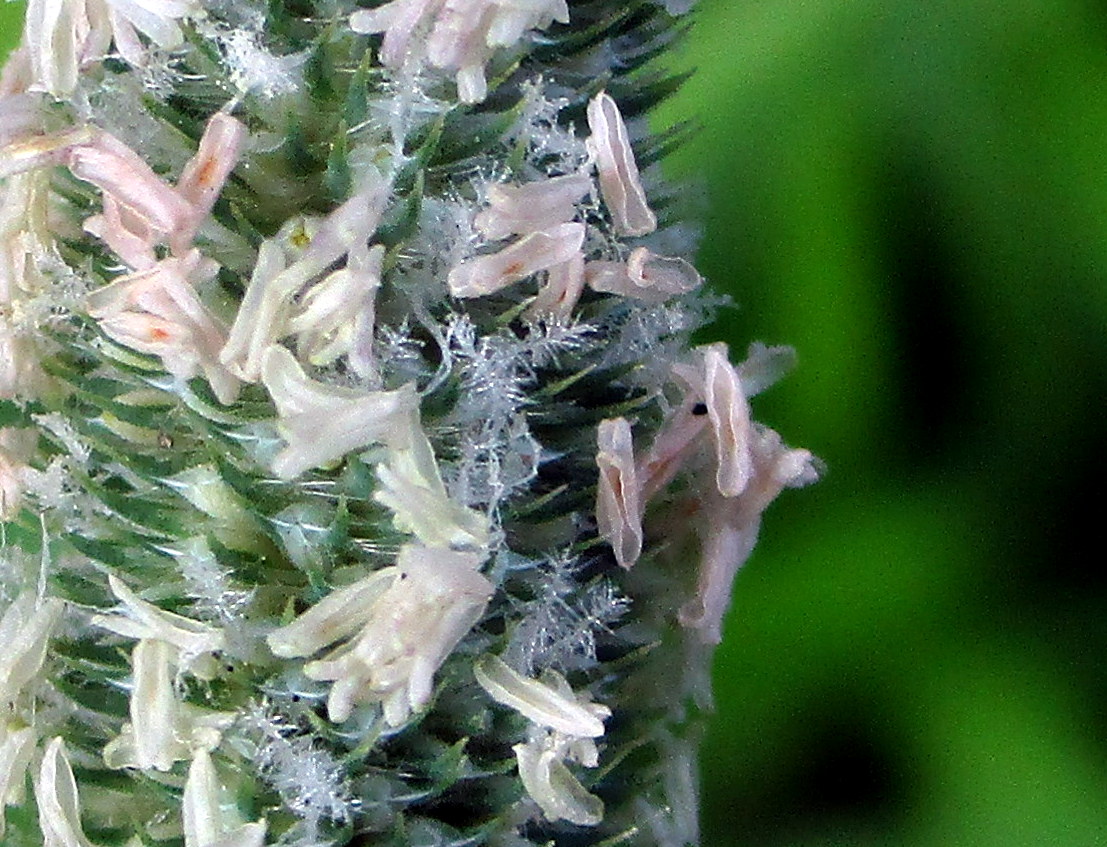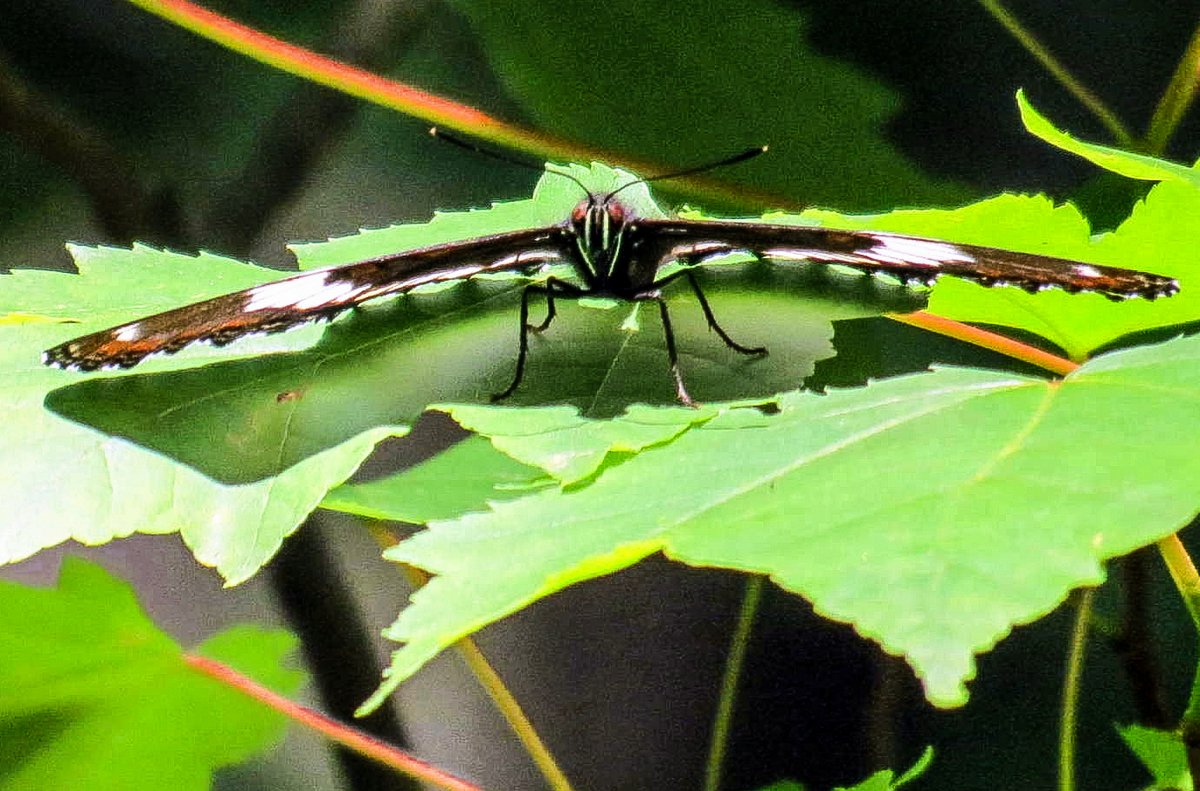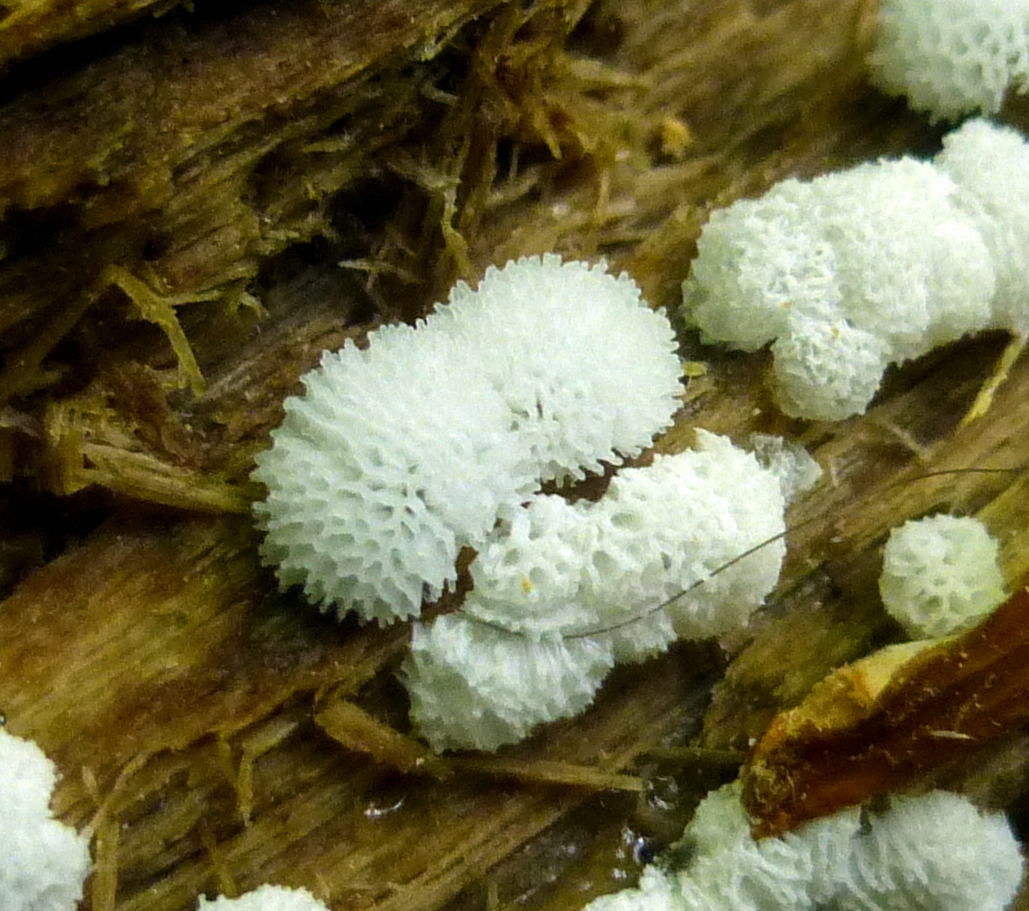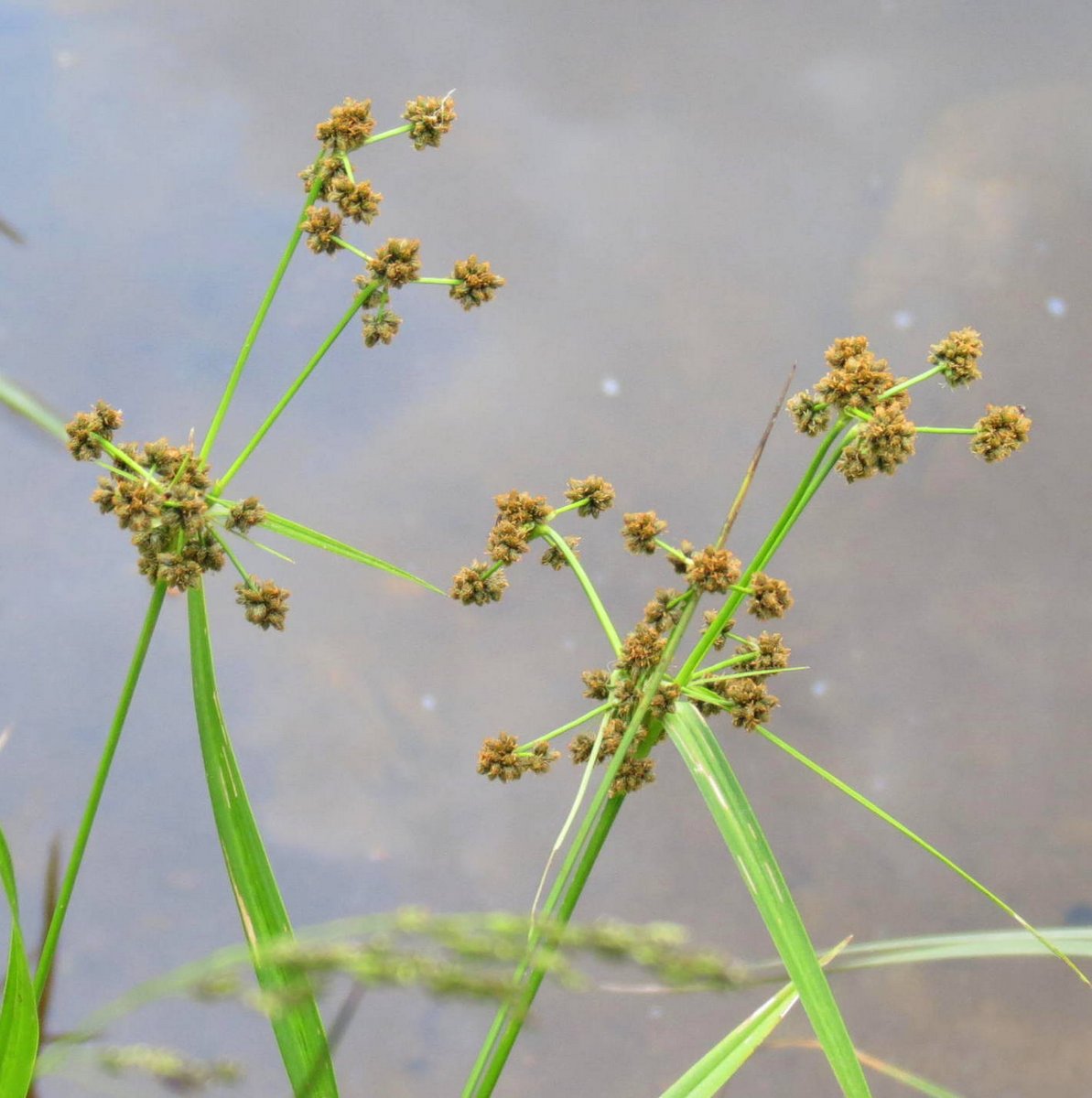
I’ve mentioned a few times on this blog lately that I’ve been doing a lot of walking, so I thought I’d show you some of the things I see on these walks. If I choose to go this way, I can see a pond full of water plants like burr reed and yellow pond lilies. The big circular plant colonies are all yellow pond lilies, and they appear to be trying to take over the pond.

I’ve seen lots of hemlock varnish shelf fungi (Ganoderma tsugae) on an old hemlock stump and the pile of logs beside it. For the first time I’ve had a chance to see these mushrooms grow day by day and I can now understand that they grow quite fast. This one went from looking like a piece of dough to what we see here in less than two weeks. It’s about the size of a salad plate; less diameter than a dinner plate but more than a saucer. It is considered the most important of all the herbs and substances used in Chinese Herbal Medicine, including ginseng. In China it is called the Reishi mushroom, and scientists around the world are researching its anti-cancer potential.
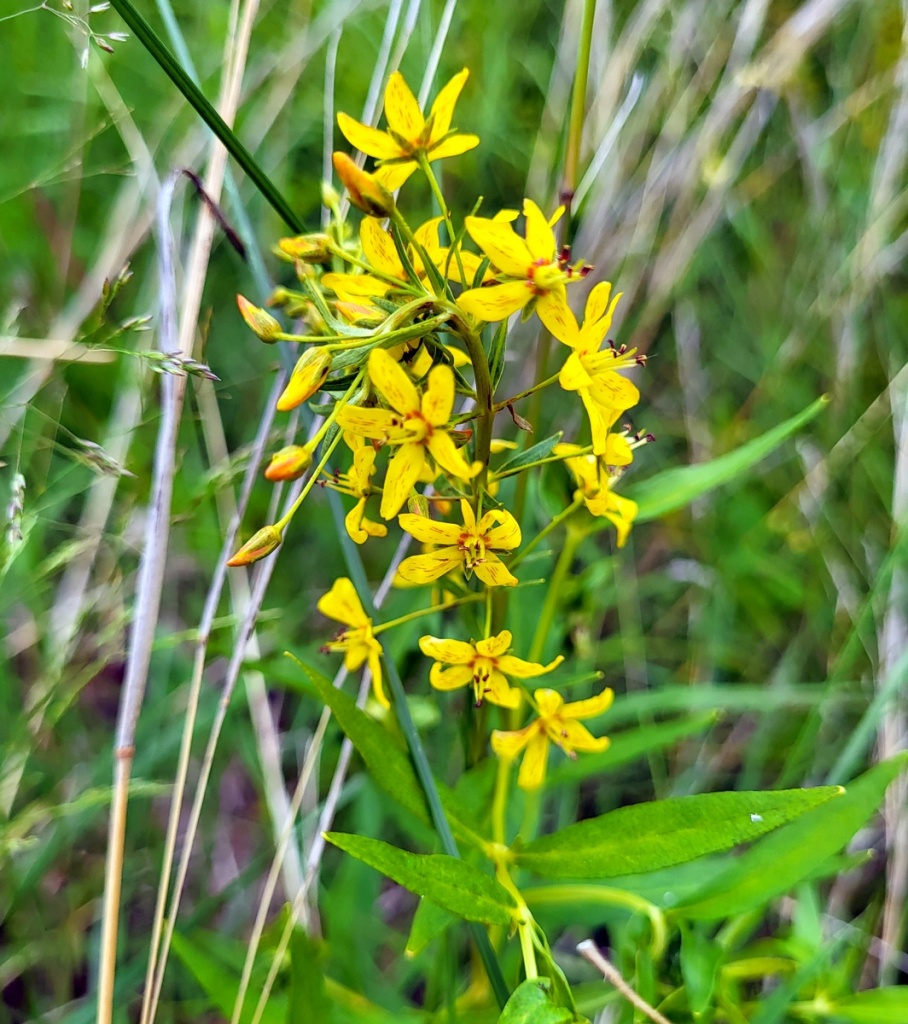
Swamp candles (Lysimachia terrestris) burned brightly in roadside ditches. This is our first yellow loosestrife to bloom each year and I sometimes see them in great numbers. They like wet places and often grow right where the water meets the shore. In fact my knees were getting wet so this isn’t a very good shot.

Soft or common rush (Juncus effusus) also grew in a ditch alongside the road. Ditches are always a good place to find a variety of plants that like wet feet, like rushes and sedges. Soft rush can form large clumps and are easy to grow. They’re interesting if placed here and there around garden ponds.

Sedge stems are triangular and have edges but soft rush stems are smooth and cylindrical, with a light pith inside. They feel soft if you pinch them, not sharp. The flower head, shown in the above photo, looks like it grows from one side of the stem but the stem actually ends at the flowers. Anything appearing above the flowers is a bract, not part of the stem. The flowers are tiny and not showy, but overall the plant is pleasing to the eye.

Gray’s sedge (Carex grayi) always reminds me of the spiky mace weapons that knights used in the Middle Ages. A botanist would say this about that: each spikelet consists of a globoid cluster of perigynia that radiate in all directions. A perigynium is a fleshy cup or tube, which in this case comes to a point or beak. Coming out of each beak are the flowers, which are what look like threads in this photo. They start out white and brown as they age. Gray’s sedge is named after Asa Gray, who wrote Grays Manual of Botany in 1848. I read my copy about 50 years ago and have used it many times since that initial reading. If you have trouble sleeping at night just read Asa’s manual for a half our or so before bedtime. You’ll sleep like a stone.

Porcupine sedge (Carex hystericina) had recently flowered and I knew that because the tiny threads at the ends of the perigynia were still white. This common sedge is also called bottlebrush sedge. Waterfowl and other birds love its seeds.

Curly dock (Rumex crispus) has flowered and is now producing its tiny winged seeds, which look a bit like stalks full of flakes.

If you look closely, you will see that each flake, which is more like a wing, has a tiny seed on it. It looks like a seed pearl at this stage but as they ripen and age the seed and its wing will turn brownish. Finally they will fall from the plant and the wind will catch the tiny wings and blow them to new places to grow. They will often persist through winter and fall the following spring. Since March is the windiest month, it is a sensible strategy for a plant that depends on the wind to get around.

Marsh fern (Thelypteris palustris) is another ditch loving plant that likes full sun and wet feet. This one had a fern ball on its tip. Fern balls appear at the tip of a fern frond and look like what the photo shows. Inside the ball is a caterpillar, which has pulled the tip of the fern into a ball shape and tied it up with silk. Once inside the shelter they feed on the fern leaflets and live completely in the fern ball until they are ready to become a moth. Emily Dickinson once wrote “To live is so startling it leaves little time for anything else,” and I wonder if she didn’t see a fern ball just before she wrote it.

Native Americans called blueberries star berries, and now you know why; the blossom end of each berry forms a five-pointed star. They used blueberries, and also the plant’s leaves and roots, medicinally as well as for food. They cultivated the bushes and made a pudding out of corn meal and water and added the blueberries to it. They then baked it, and it saved the life of many a European settler, as did their pemmican.

I see several native catalpa trees (Catalpa speciosa) on my walks and right now they’re in full bloom and very beautiful. It’s like looking at a tree full of orchids.

Catalpa flowers are big; your index finger will fit right in there. The trees they grow on are also very big and a mistake I see people make over and over again is planting them too close to their house. Catalpa, for all its beauty, is also a messy tree. First the spent flowers fall by the thousands in early summer, and then in fall the giant heart shaped leaves turn yellow and fall. In the spring the seedpods come down. These are like two-foot-long string beans and they make quite a mess. It is a tree that creates a lot of work if planted where everything that falls from it has to be raked up but in spite of all of this if someone asked me if they should plant a catalpa I’d say absolutely, just keep it away from the house. Plant it at the edge of the property, or by a pond if you have one.

I saw a bittersweet nightshade plant (Solanum dulcamara) coming up out of the center of a yew, and it was loaded with its pretty blue and yellow flowers. It might be pretty but it’s a real stinker, and if you break the stems, you’ll smell something unusual. It produces solanine which is a narcotic, and all parts of the plant are considered toxic, so that might account for the smell. The plant climbs up and over other plants and shrubs and often blossoms for most of the summer. It’s originally from Europe and Asia and is in the potato family, just like tomatoes. The fruit is a red berry, which in the fall looks like a soft and juicy, bright red, tiny Roma tomato. I wouldn’t eat one though.

I like the flowers when they’re fully open like this one but you have to be quick to catch them this way because the petals recurve quickly. You can see that most of them have done so in the previous photo. Cranberry flowers do the same thing.

A button bush (Cephalanthus occidentalis) was budding up and preparing to flower. It will have a perfectly spherical flower head that looks a lot like a pincushion before it is through. I’ve seen lots of button bush flowers but apparently, I’ve never paid any attention to the buds. These reminded me of the game Jacks that we used to play long ago.

English plantain (Plantago lanceolata) flowers open in rings as they circle their way up the flower stalk, starting at the bottom and working towards the top. Though an invasive from Europe and Asia English plantain prefers growing in soil that has been disturbed, so it isn’t often seen in natural areas where there is little activity. I see it in lawns more than anywhere else but I see more of it each year.

Pokeweed (Phytolacca americana) has just started blooming. This now common plant wasn’t always common in this area. When I was a boy, I had a transistor radio and at night I used to fall asleep listening to it. One of the songs I could count on hearing every night was Polk Salad Annie by Tony Joe White. It was about a poor southern girl who had only pokeweed to eat because her mother was on a chain gang and her grandmother was eaten by an alligator. Her father and brothers were lazy, so all they had were the poke greens. Of course all of us school kids talked about both the song and the plant, but when we asked our parents what pokeweed was, they didn’t know. They just said it must be a southern plant, but no more; now it’s an everywhere plant, and it is big and noticeable.

Pokeweed flowers are about 1/4 inch wide and have 5 petal-like, rounded sepals. In the center of the flower are green carpels that come together and will form the purple black berry. Native Americans called the plant pocon and used the juice from the berries to decorate their horses. People still use it to dye wool today. If you’d like to hear the song about Polk Salad Annie that I used to hear in 1969, just click here: https://www.youtube.com/watch?v=MCSsVvlj6YA
Pokeweed is toxic unless you get the early spring shoots and I’ve read that it can make you kind of crazy if you eat too much of it, so that might account for all the grunting and oohing you hear from Tony Joe White.

Yarrow (Achillea millefolium) is having an amazing year and the plants are huge. It starts blooming usually in June and then takes a rest in the heat of summer before re-blooming when it cools off again. This plant was once so highly valued that it was traded among all the people of the earth, but now we hardly give it a glance. It is mentioned in the Chinese I Ching, which is said to pre date recorded history, and it was found in an excavation of a Neanderthal grave site. It was a valuable healing herb, one of the nine “holy herbs,” and its value was most likely due to its ability to staunch the flow of blood. The Achillea part of the scientific name comes from the Greek god Achilles, whose soldiers it is said, used the plant to treat their wounds. Because of its being so freely traded it is one of just a few plants that now grow on every continent except Antarctica. I see it everywhere I go.

Poplar seeds fall from the female trees and often find each other in the wind, and then roll into a ball of what looks like cotton. This is the reason the trees are also called cottonwoods. A tree 100 feet high and five feet across can grow from a seed just 5/32 of an inch long. For a certain amount of time in spring the air is filled with them.

Back when I was a boy everyone said that when the wind blew hard enough to show the bottoms of the leaves on trees like silver maple, it meant that it was going to rain. I have since learned that what it really means is that the wind is blowing, and nothing more. The strong wind might be caused by a front passing through, but that doesn’t always mean rain. On this day all the leaves were showing silver but we didn’t see a drop fall.

I like to watch grasses flower and turn purple, and one of the most purple of them all is Timothy, named after farmer Timothy Hanson, who began to cultivate and promote it in 1720. Each tiny flower on Timothy grass has three purple stamens and 2 wispy white stigmas. I spent a lot of time when I was a boy chewing on a piece of this grass hanging while I walked the railroad tracks and as I’ve mentioned before, it is the grass I think of when I hear the opening line of the song Ventura Highway by the band America, which starts Chewing on a piece of grass, walking down the road… I just listened to it and it still sounds as good as it did in 1972. It reminds me of simpler times.

These are the leaves of staghorn sumac, which I see just about everywhere I walk and which in spring remind me of bamboo. Later on they’ll remind me of palm trees. If I’m lucky I’ll see them wearing bright red in the fall.

I hope you enjoyed this walk, just one of several that I do. There is nothing easier than walking; you don’t even have to choose where to go because the paths are just there and going right or left really doesn’t matter. I’ve always been more of a walker than a driver but until now I never really paid attention to the health benefits. I’m losing weight, my legs and knees feel better and I can breathe much easier than I could just a few months ago. I don’t think of distance or destination or anything else. I just walk until I’m ready to stop. If you’re healthy and interested open your door and start walking, and just see what you see. Give yourself the time and freedom to wander. You might be surprised by what you find.
The only way to understand a land is to walk it. The only way to drink in its real meaning is to keep it firmly beneath one’s feet. Only the walker can form the wider view. ~Sinclair McKay
Thanks for stopping in.

























